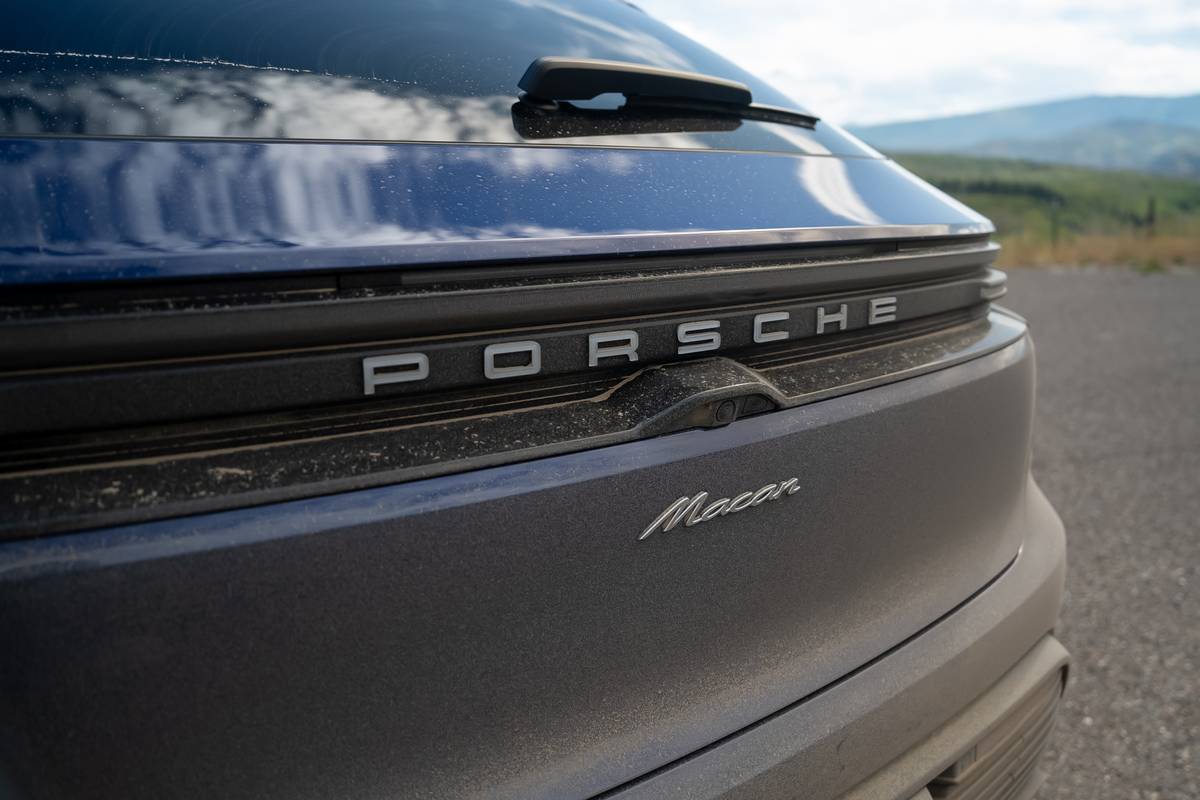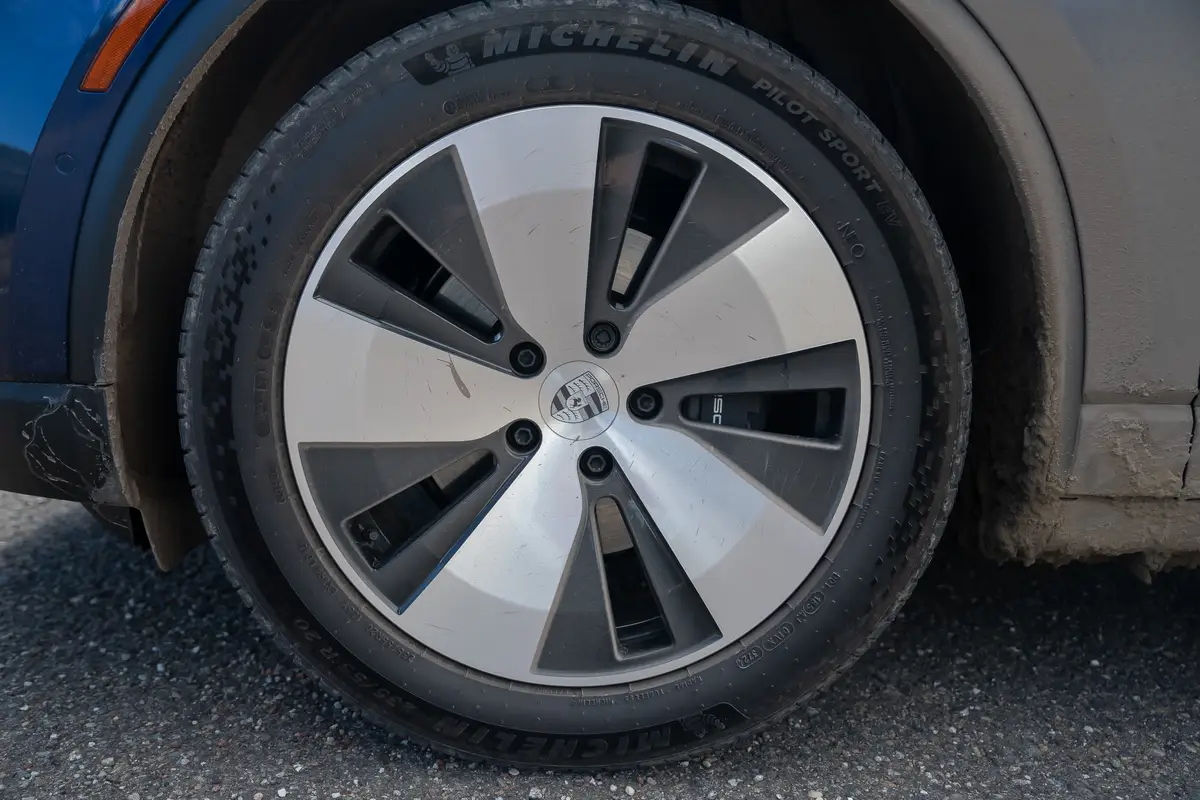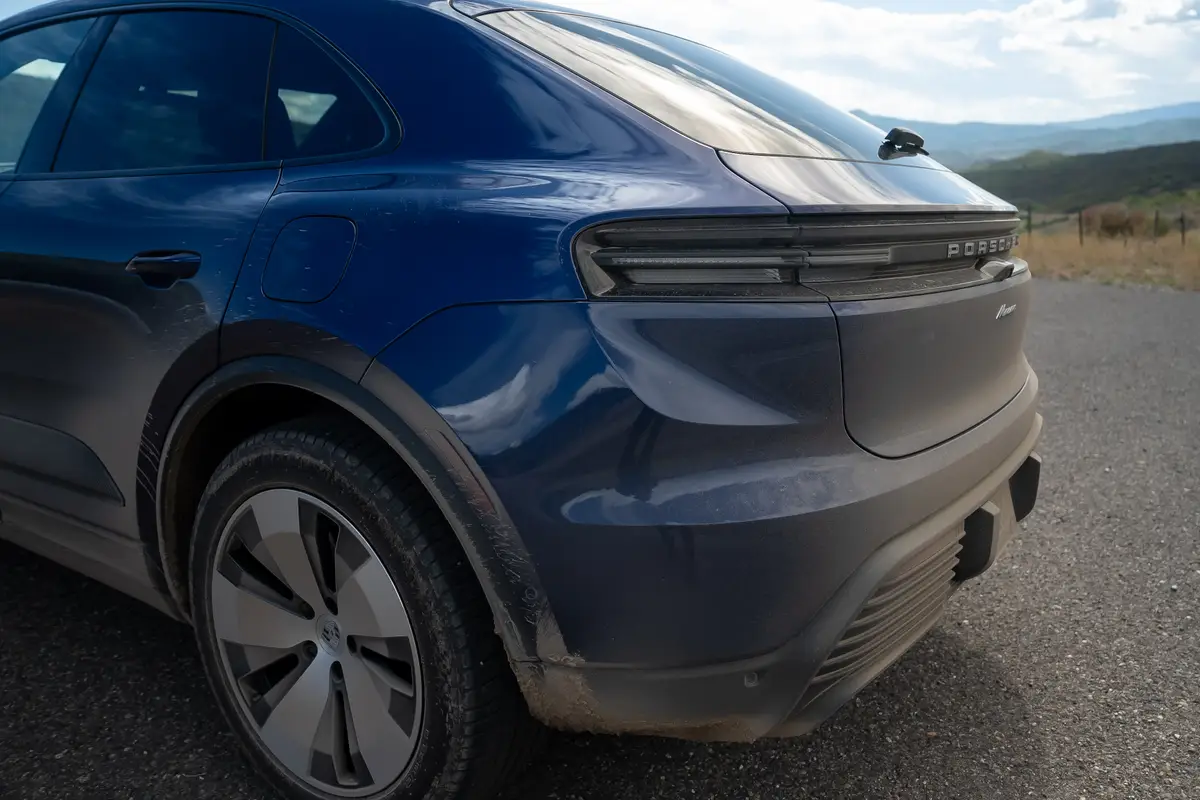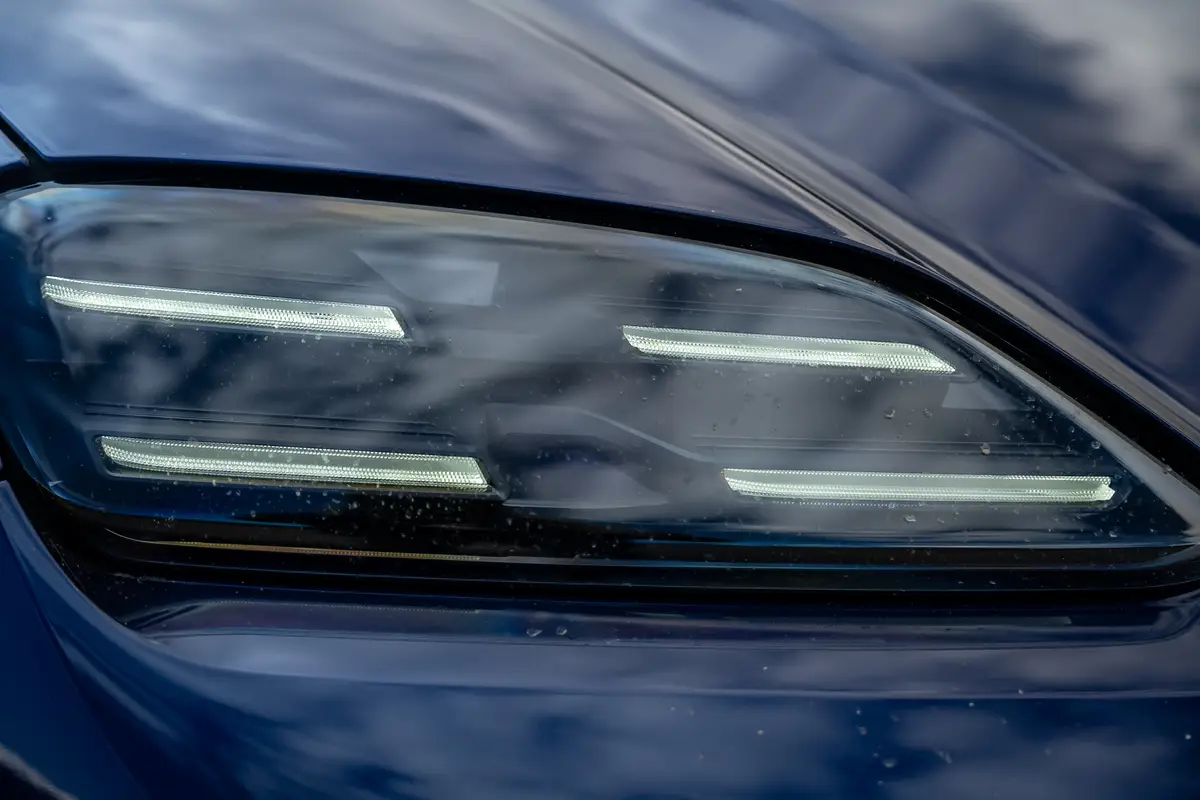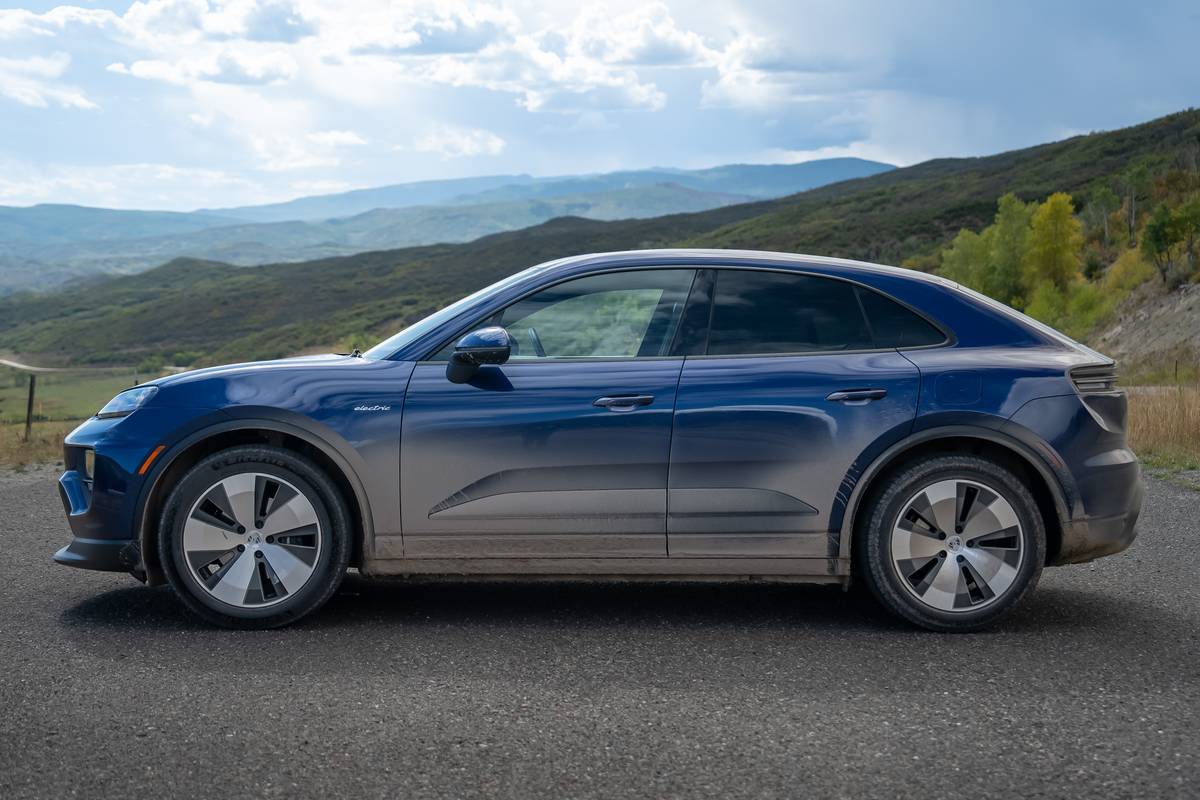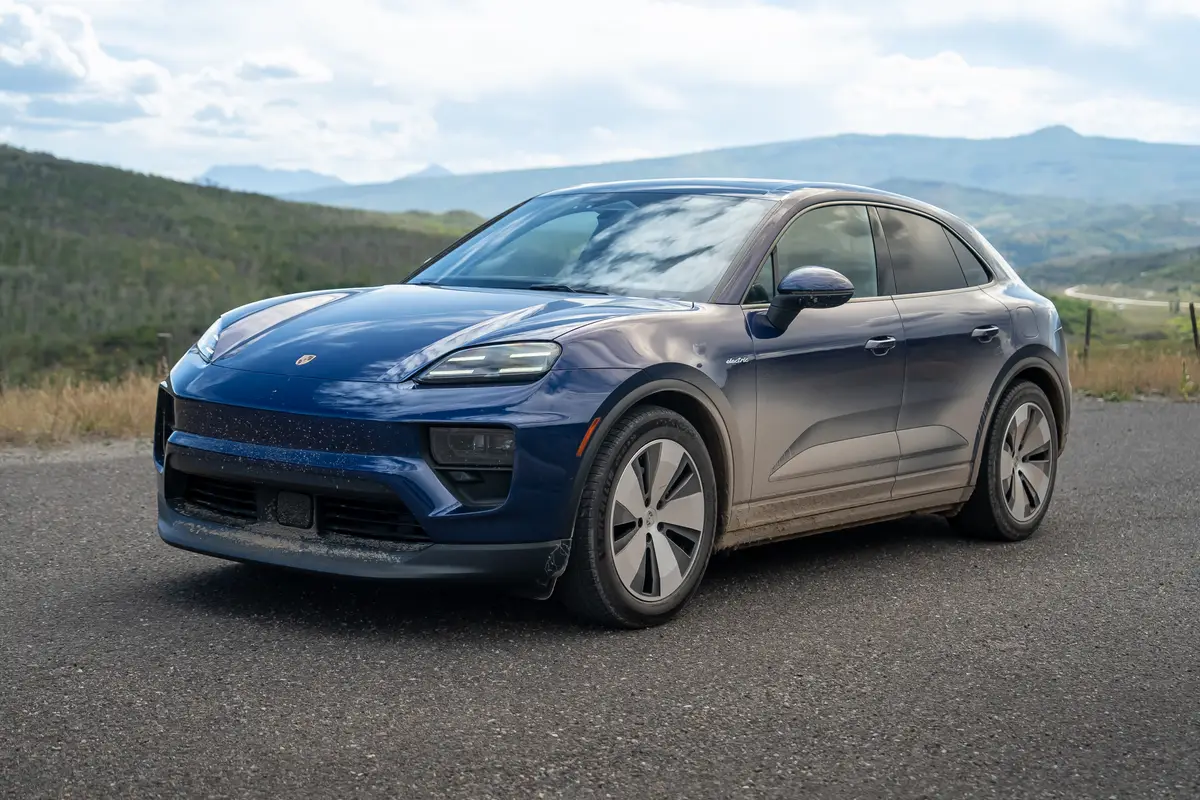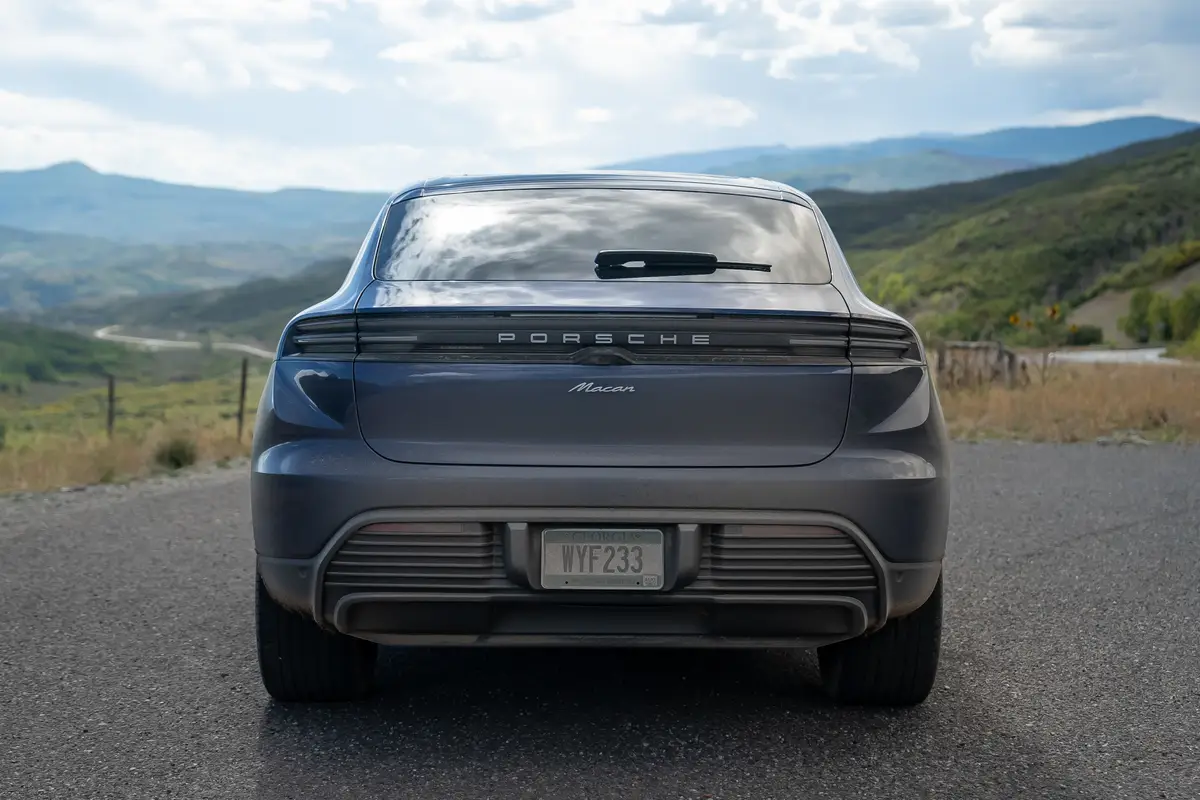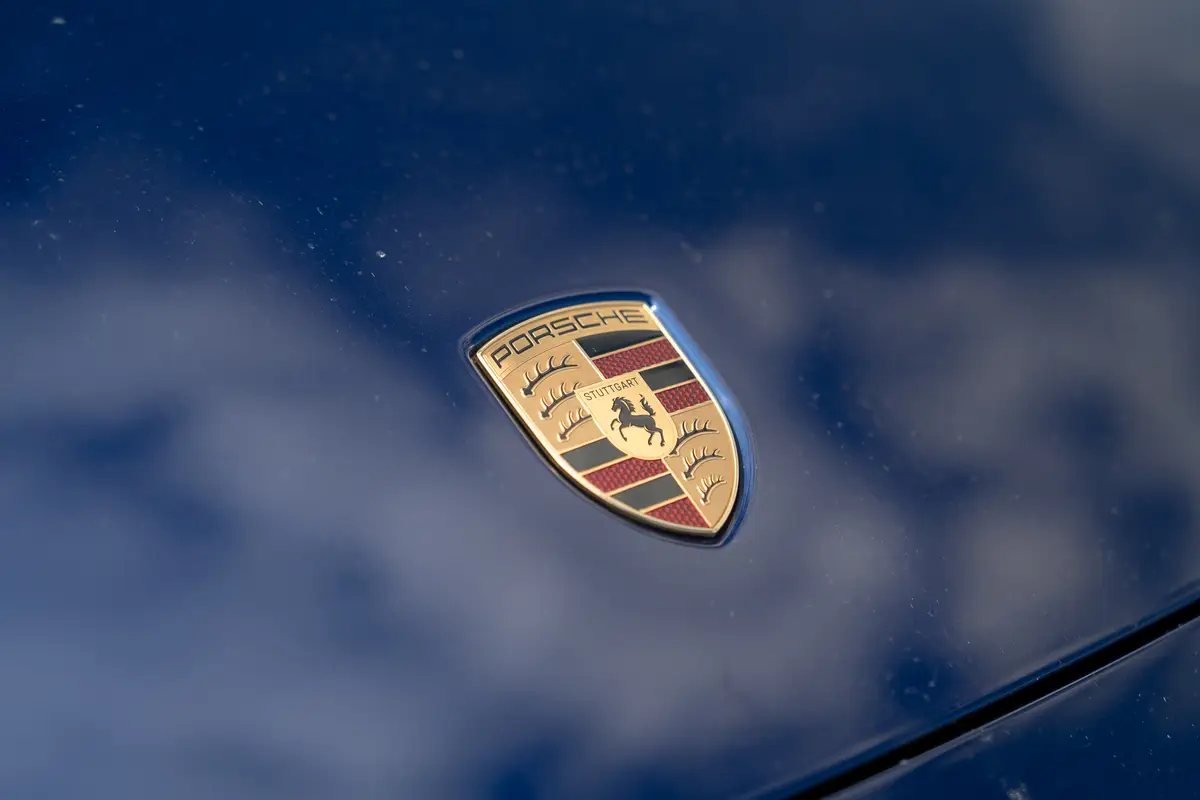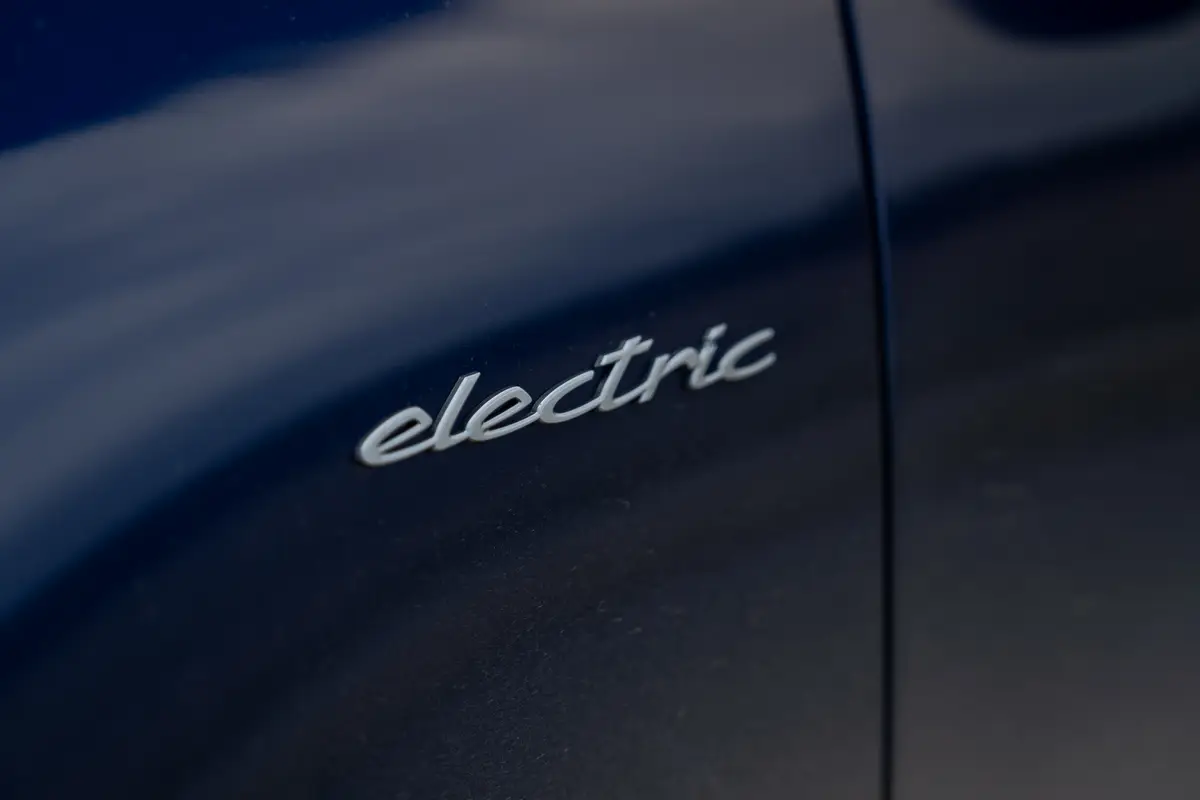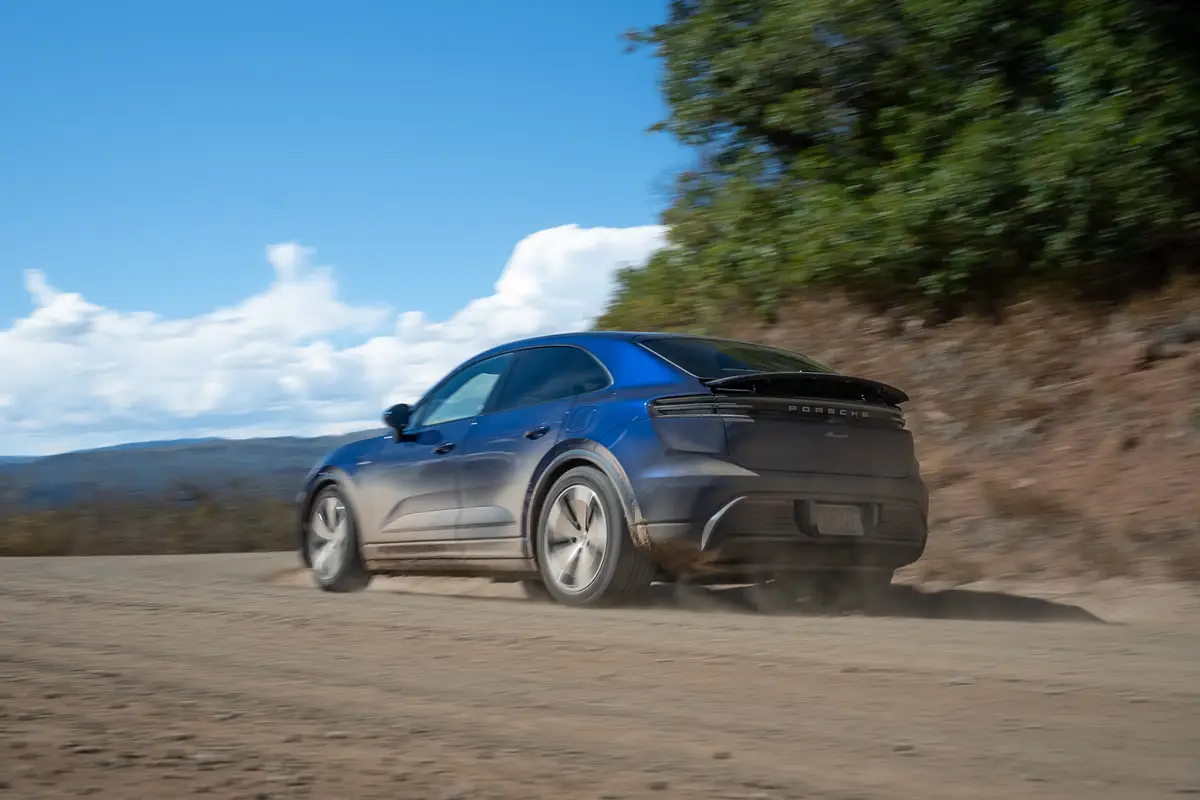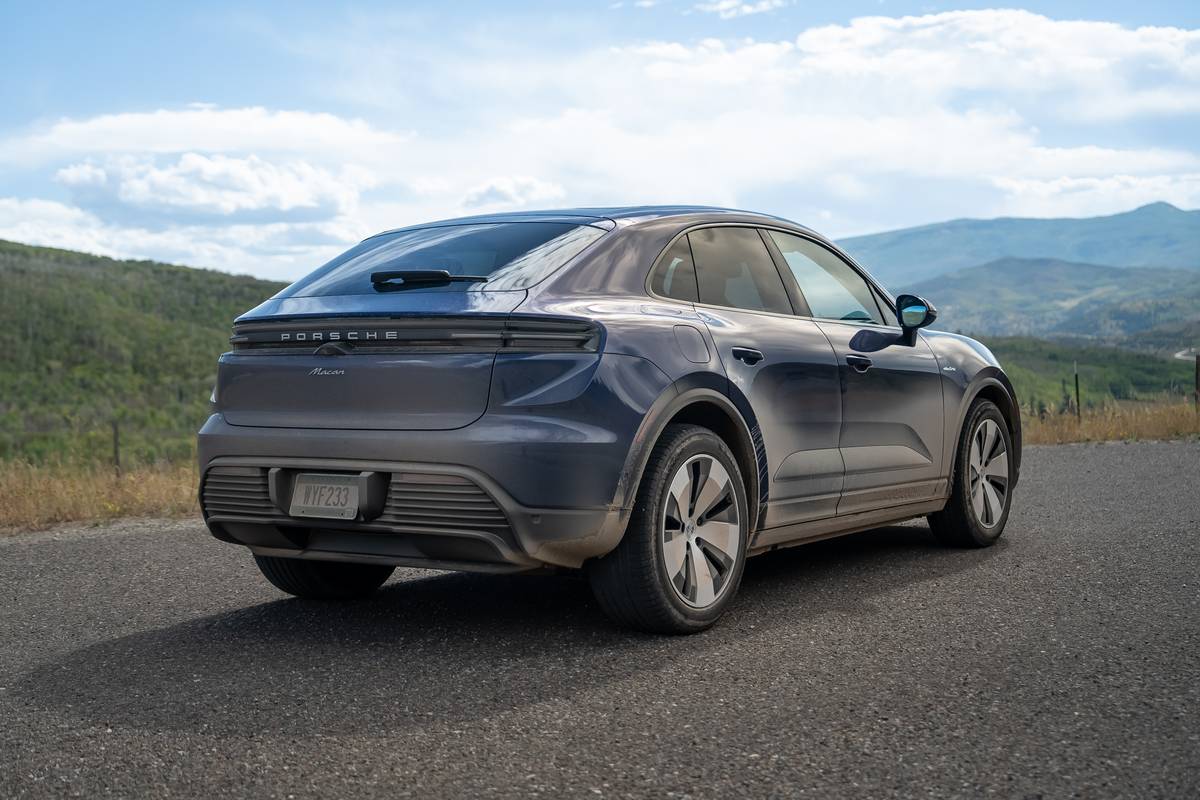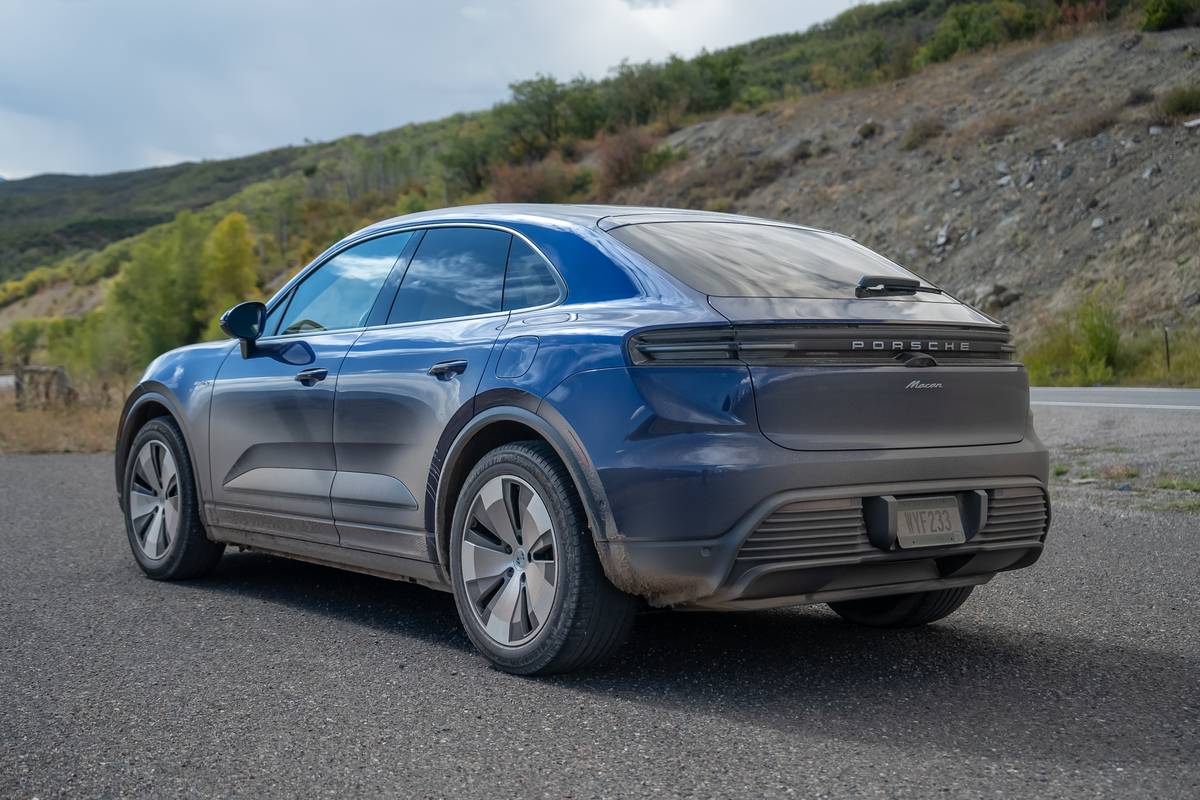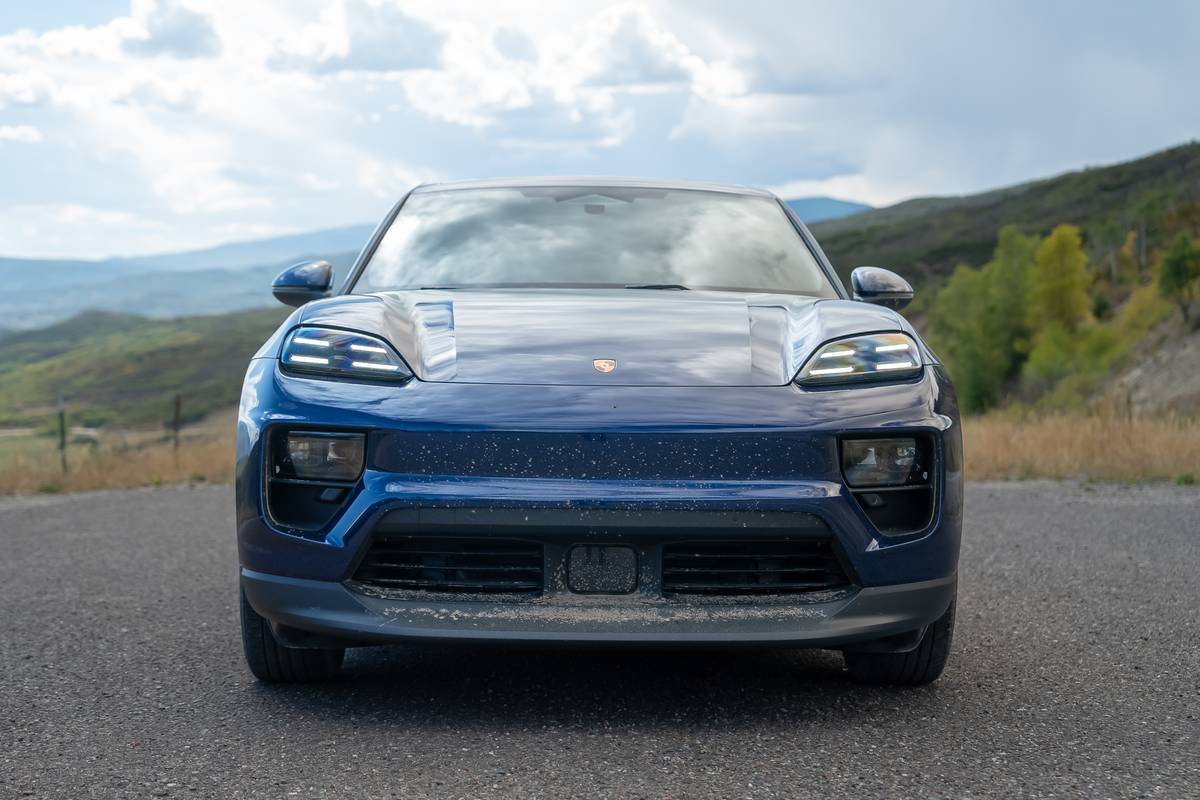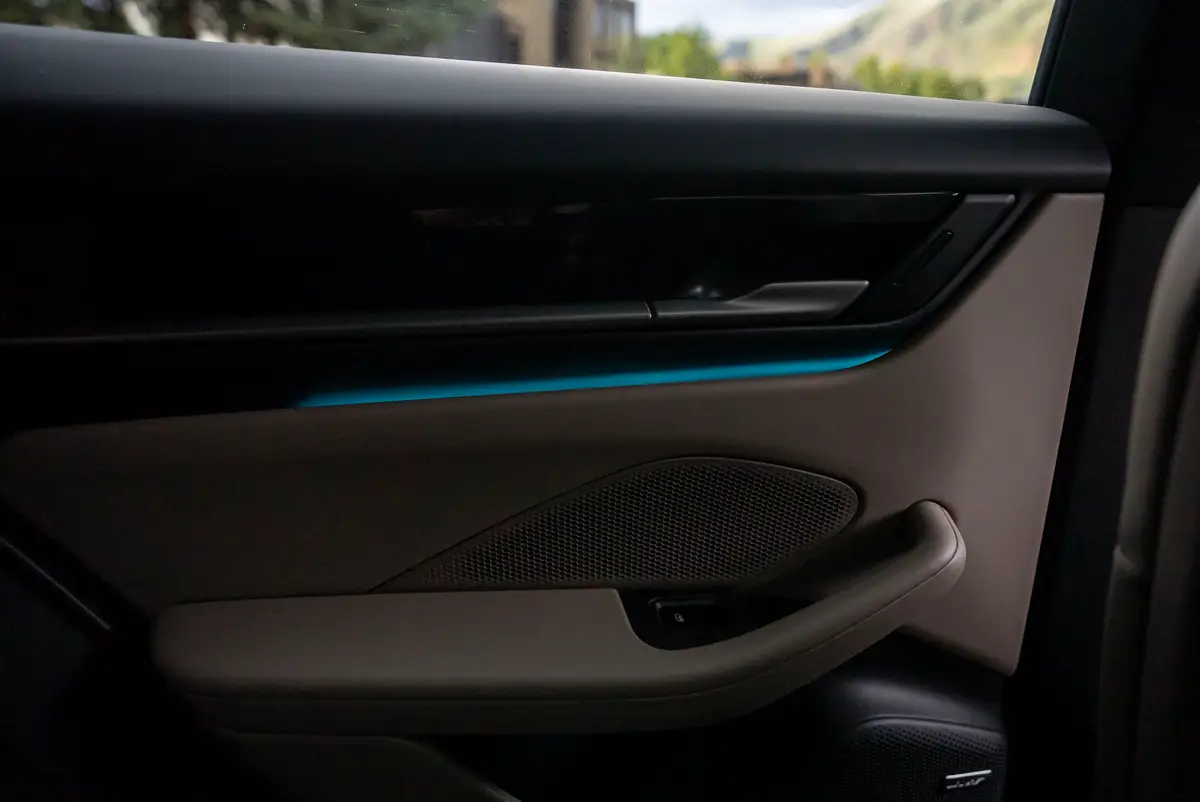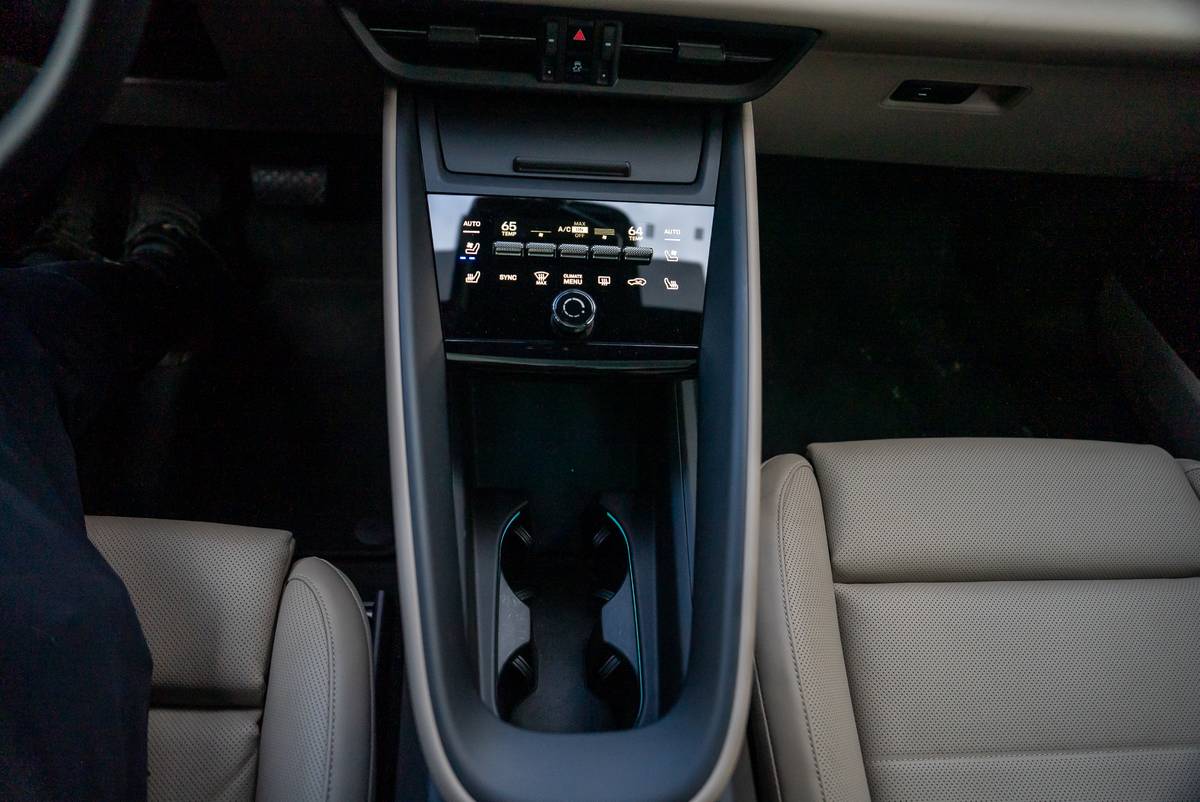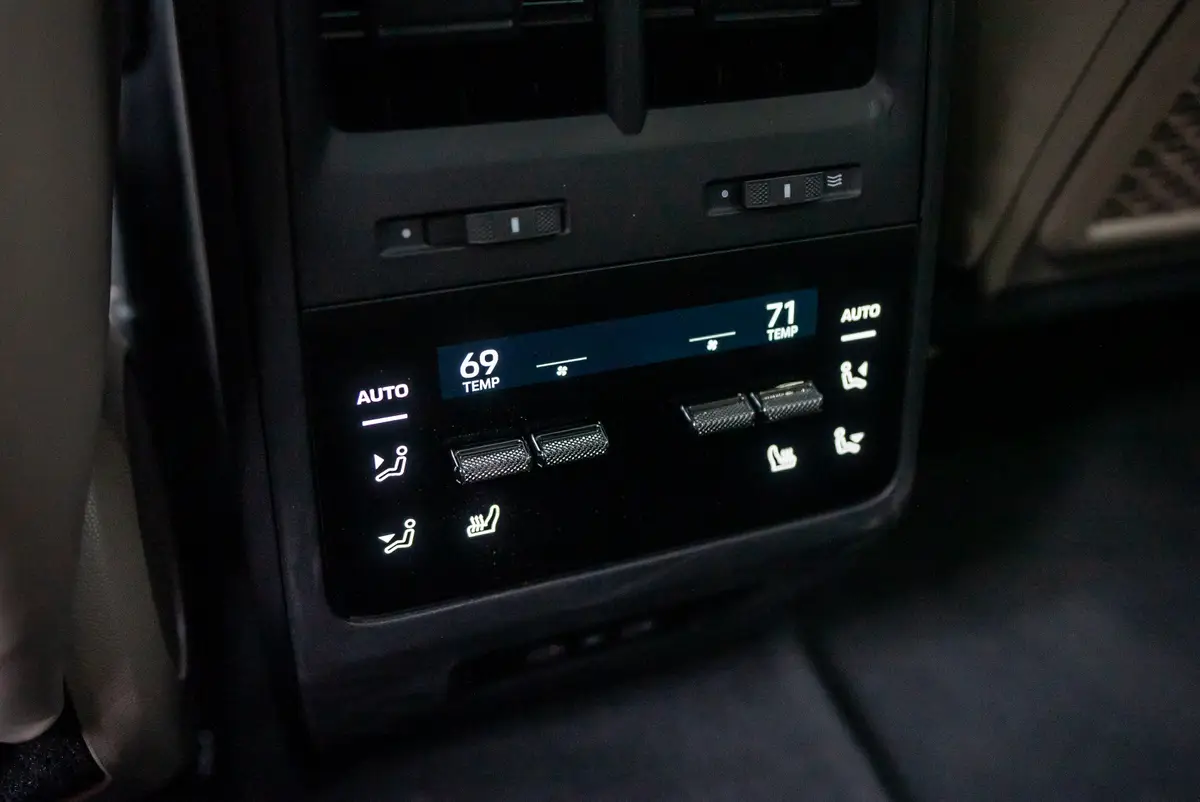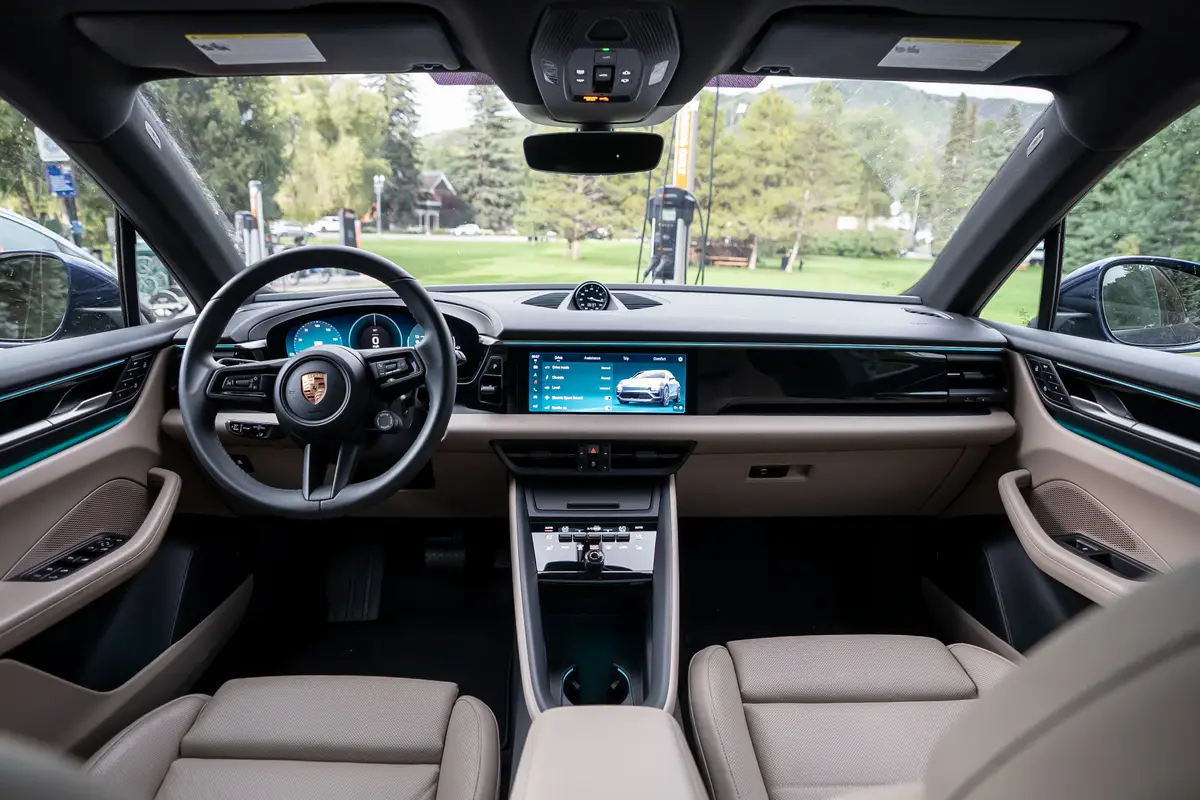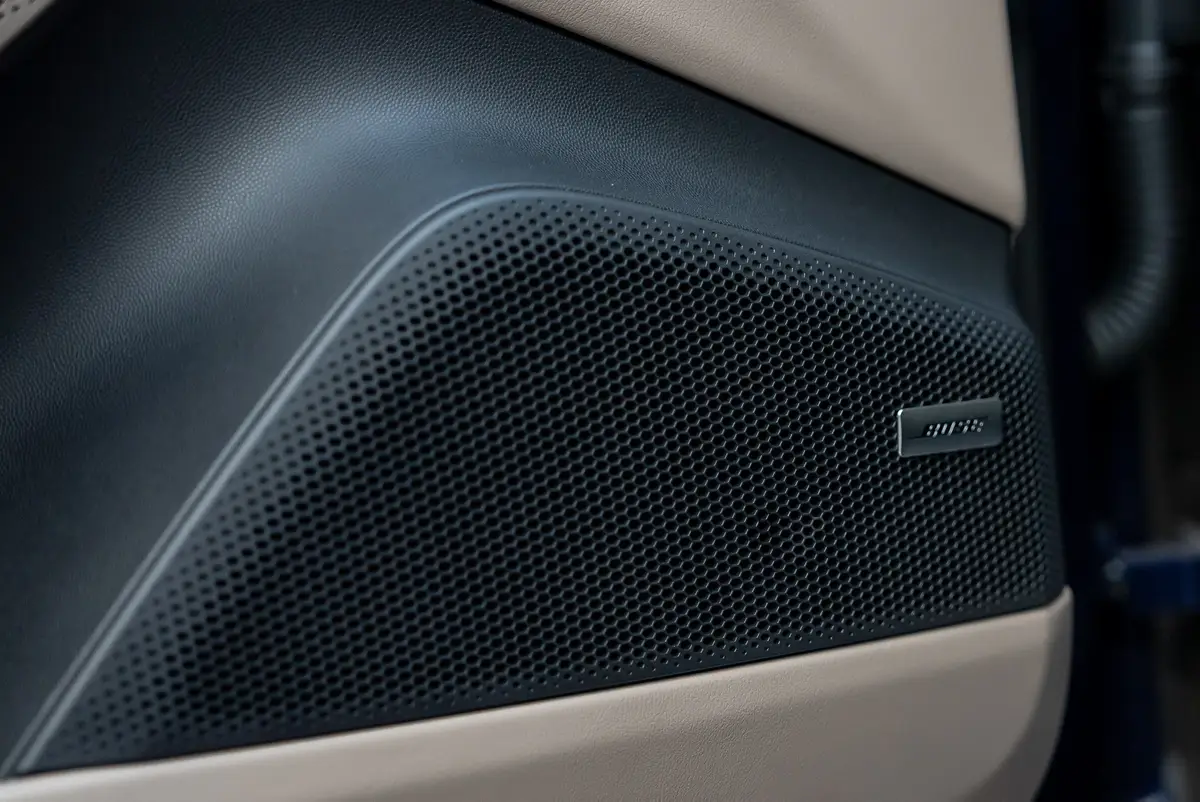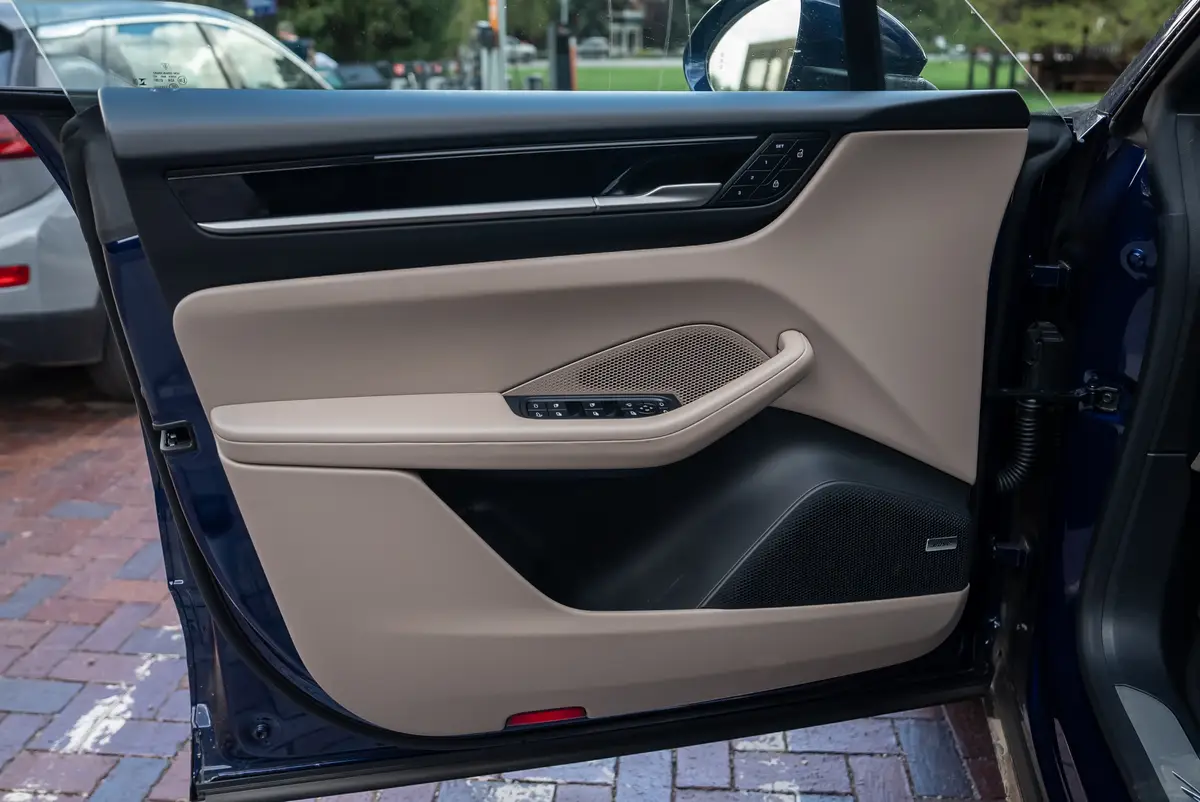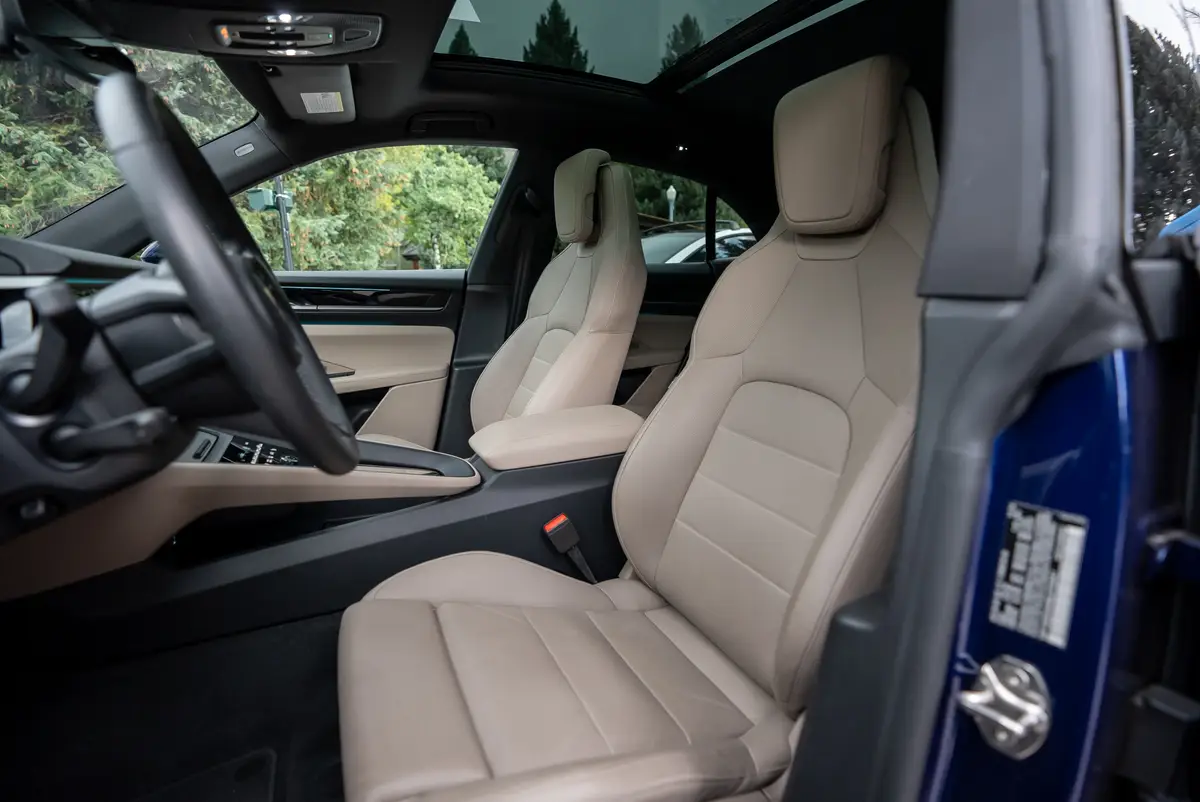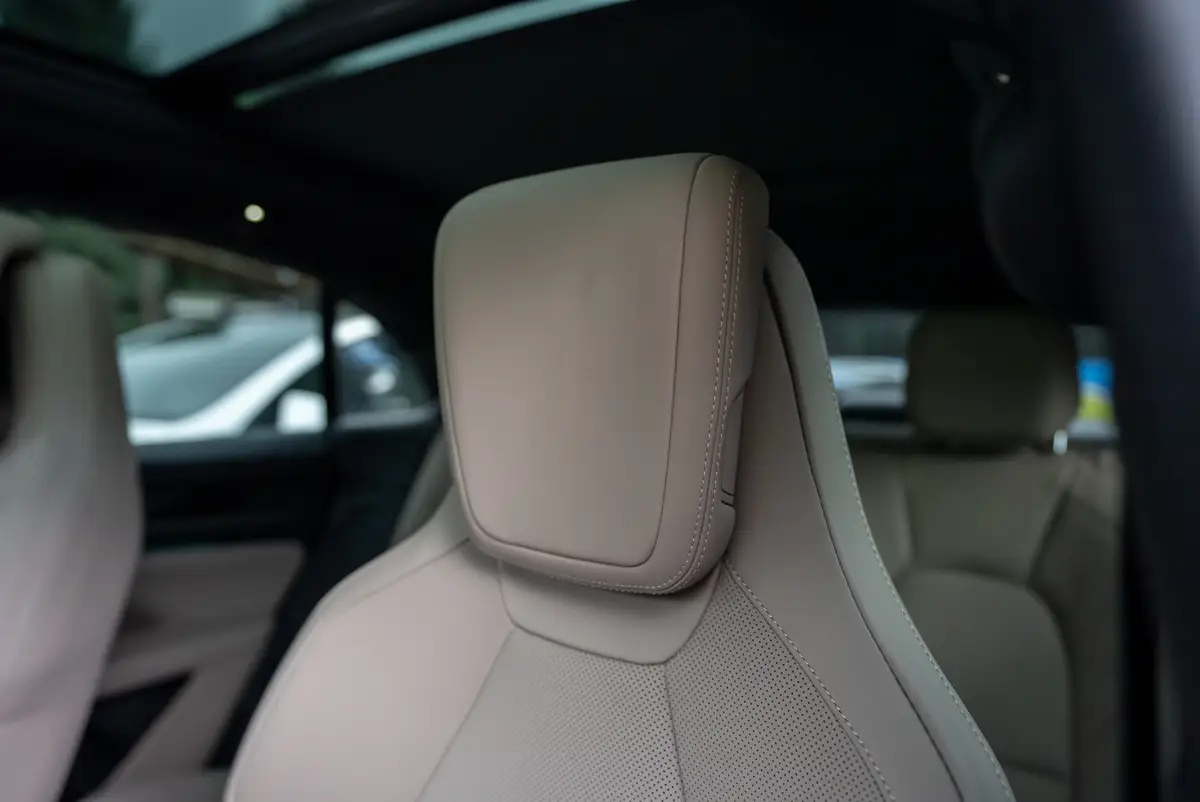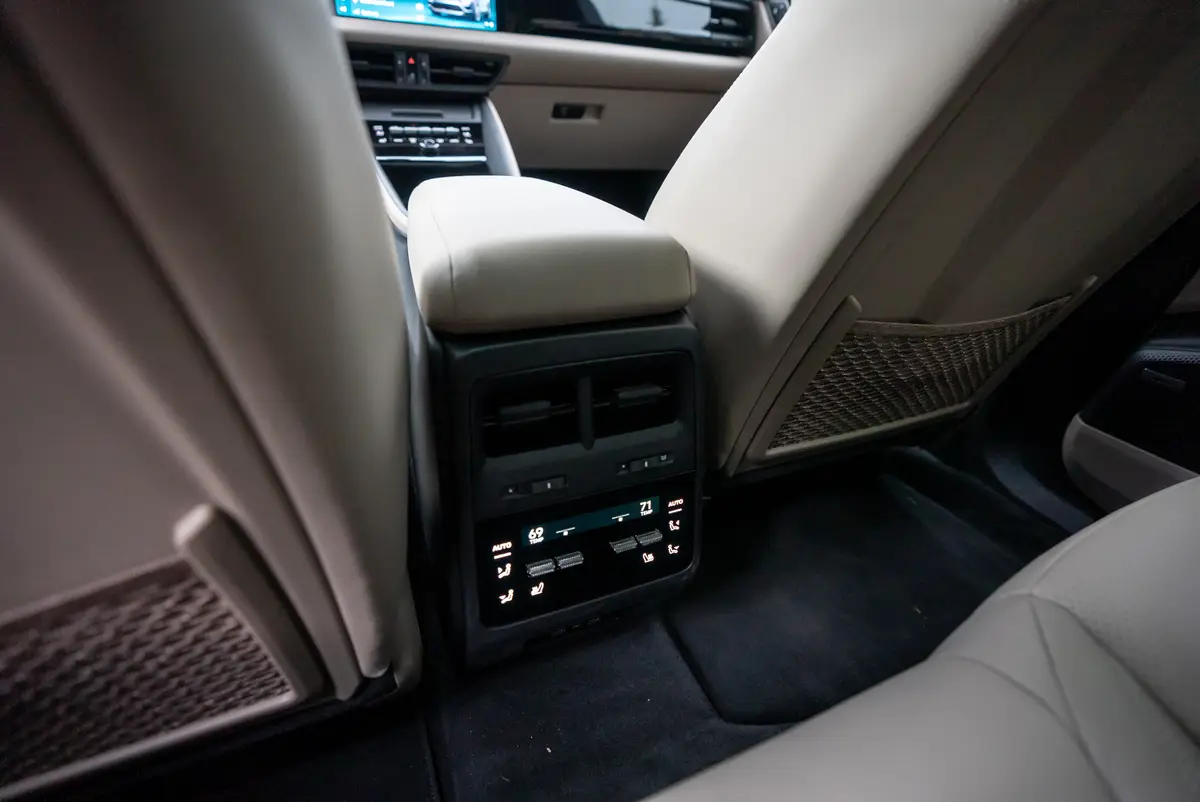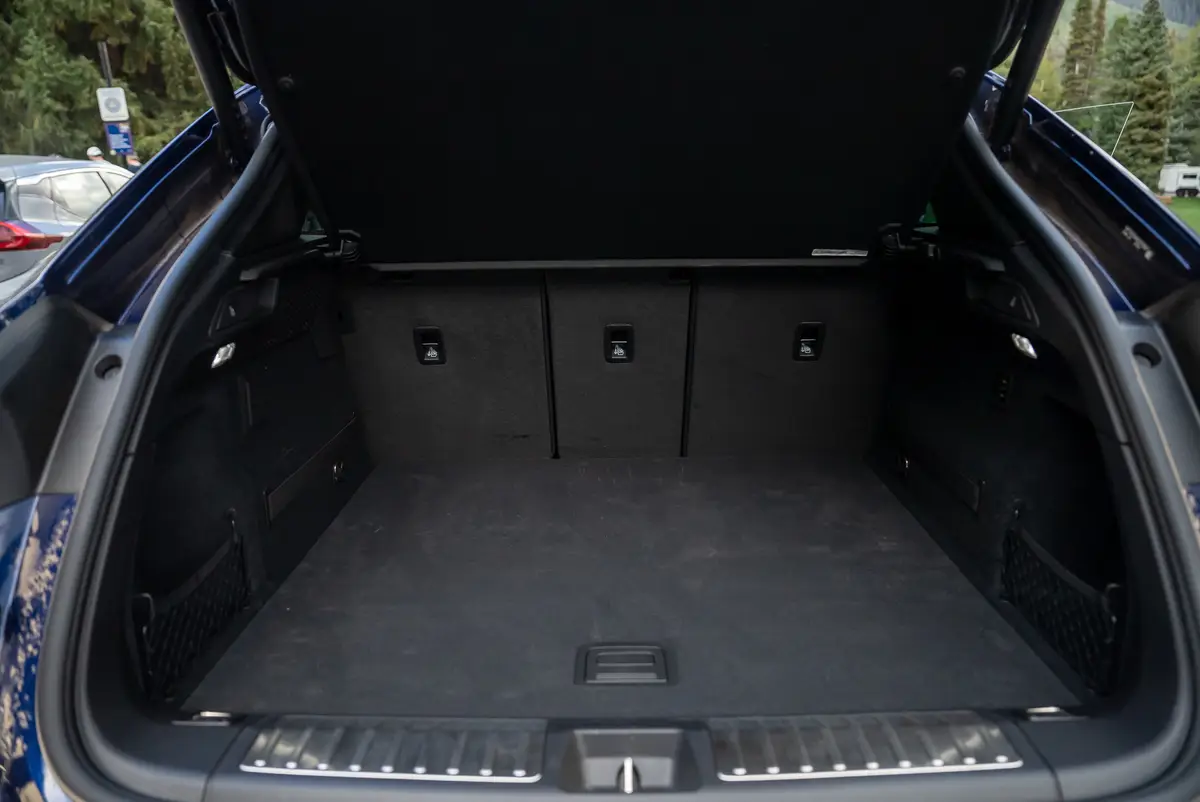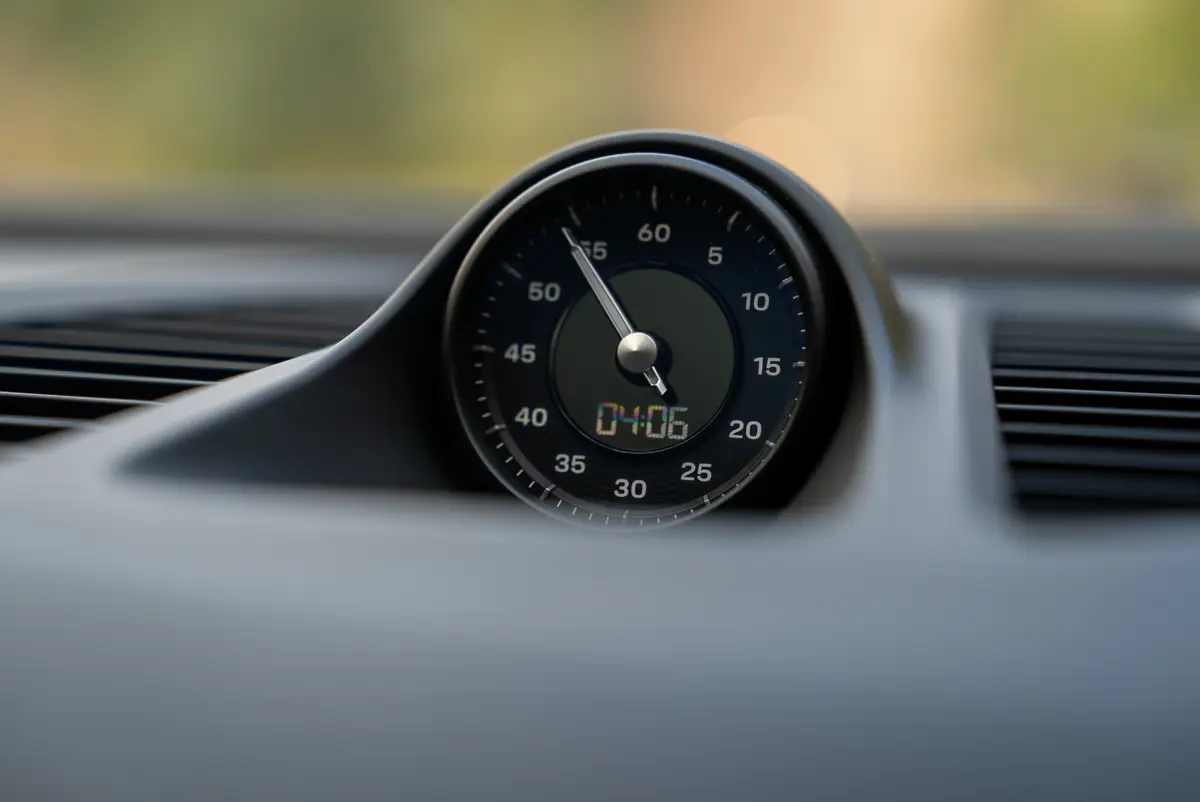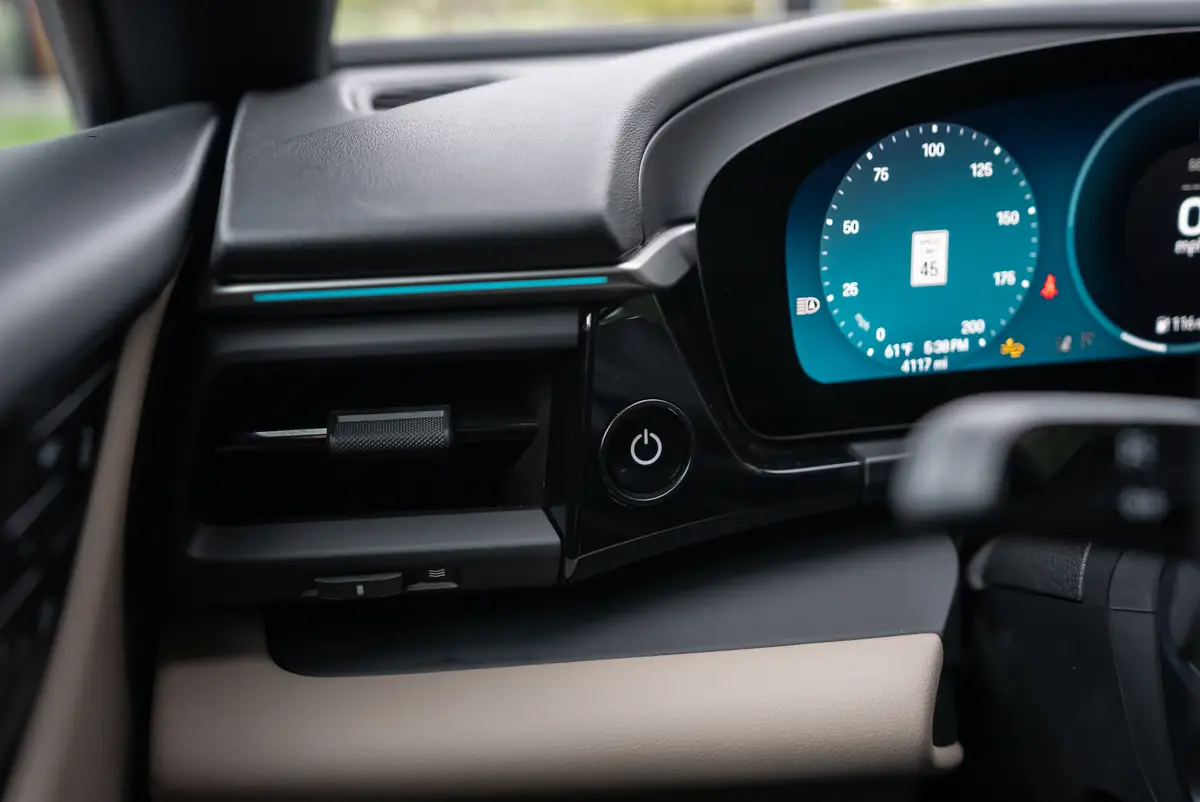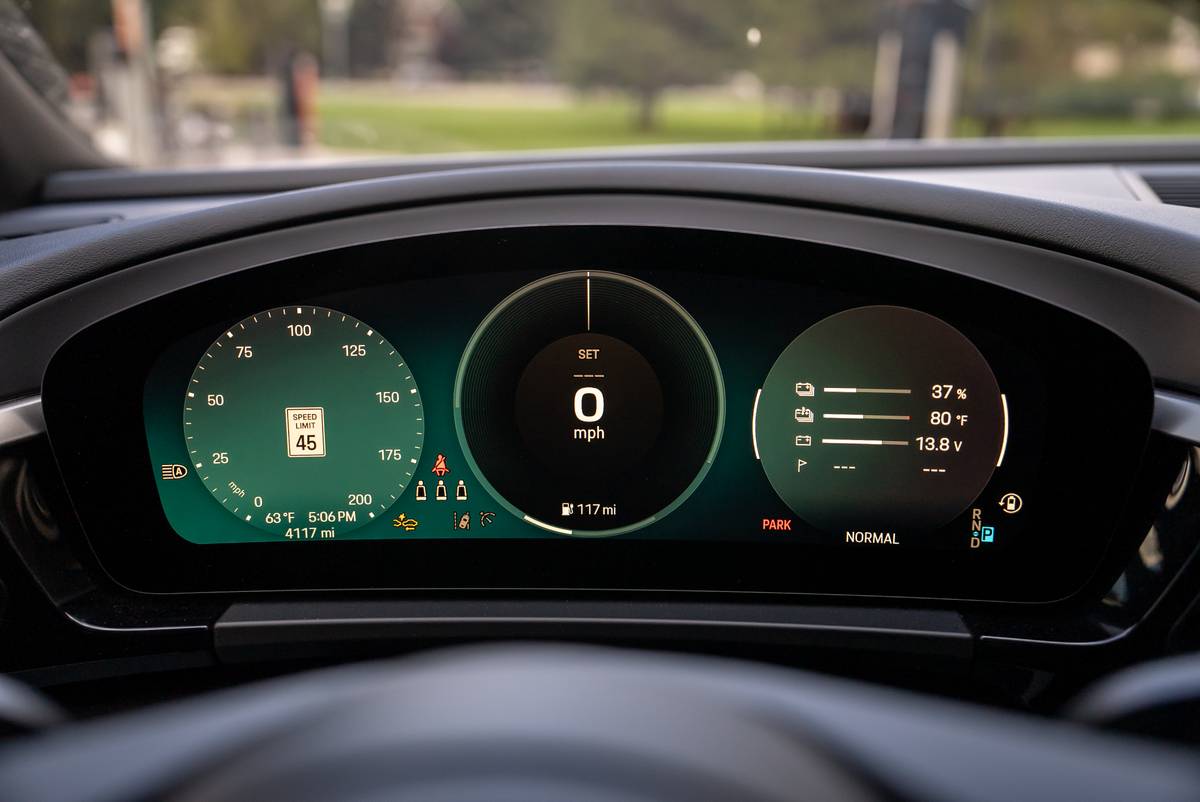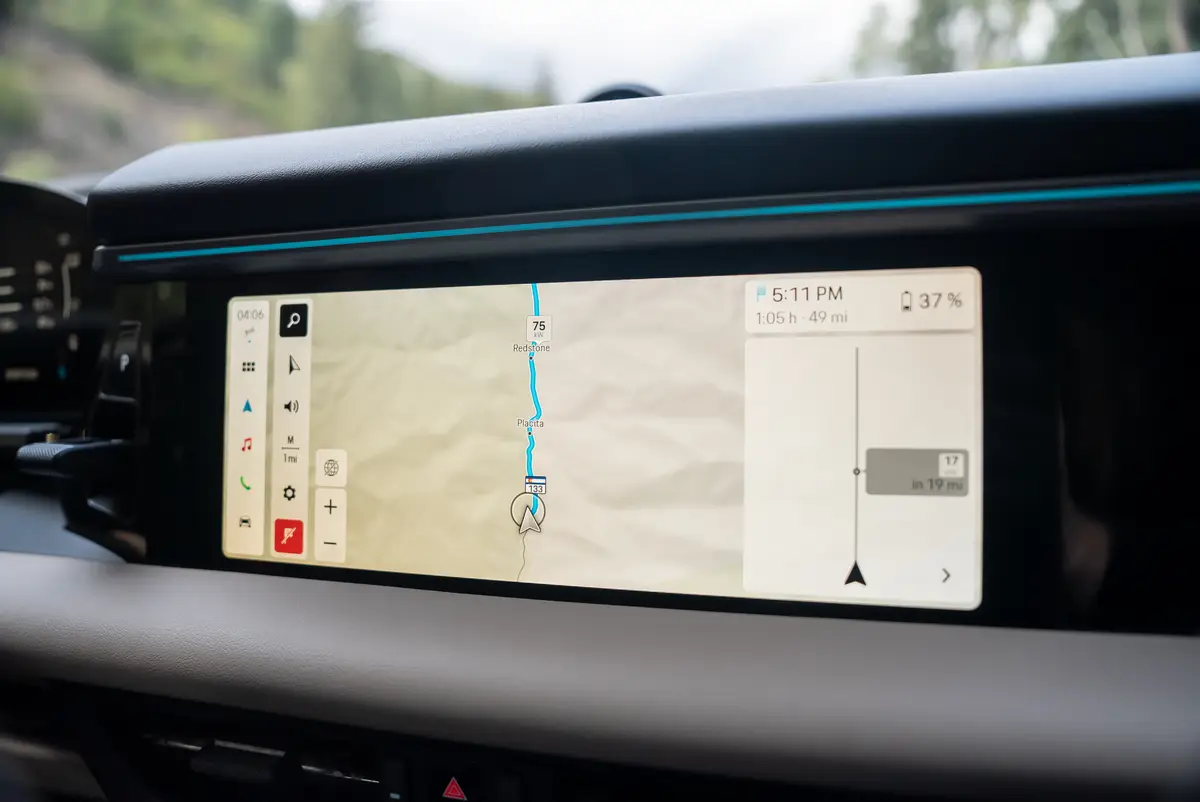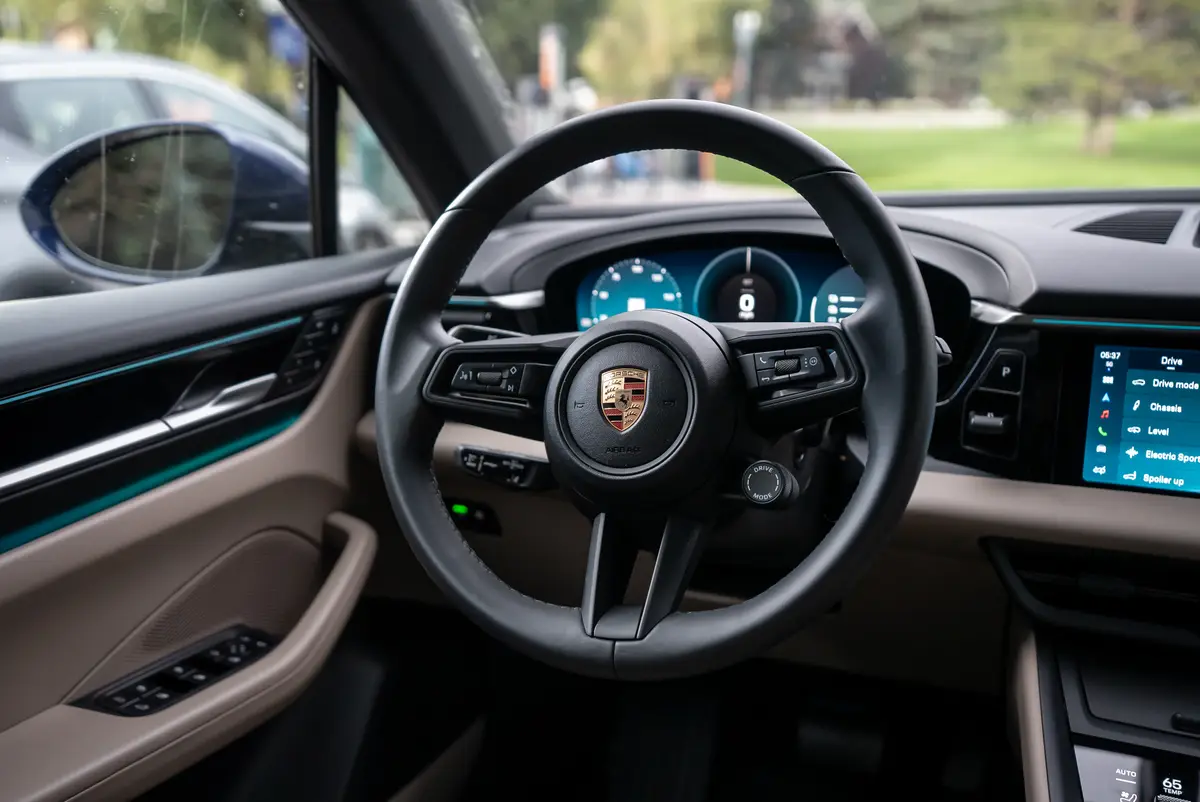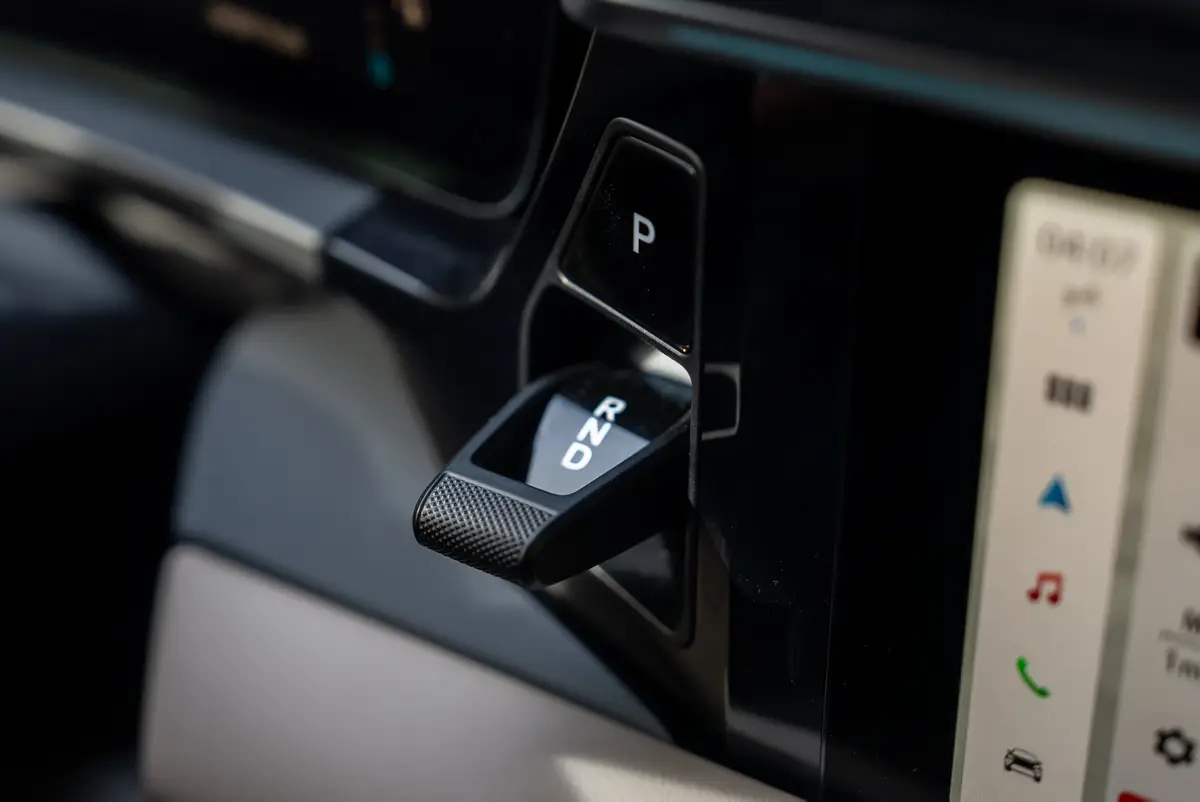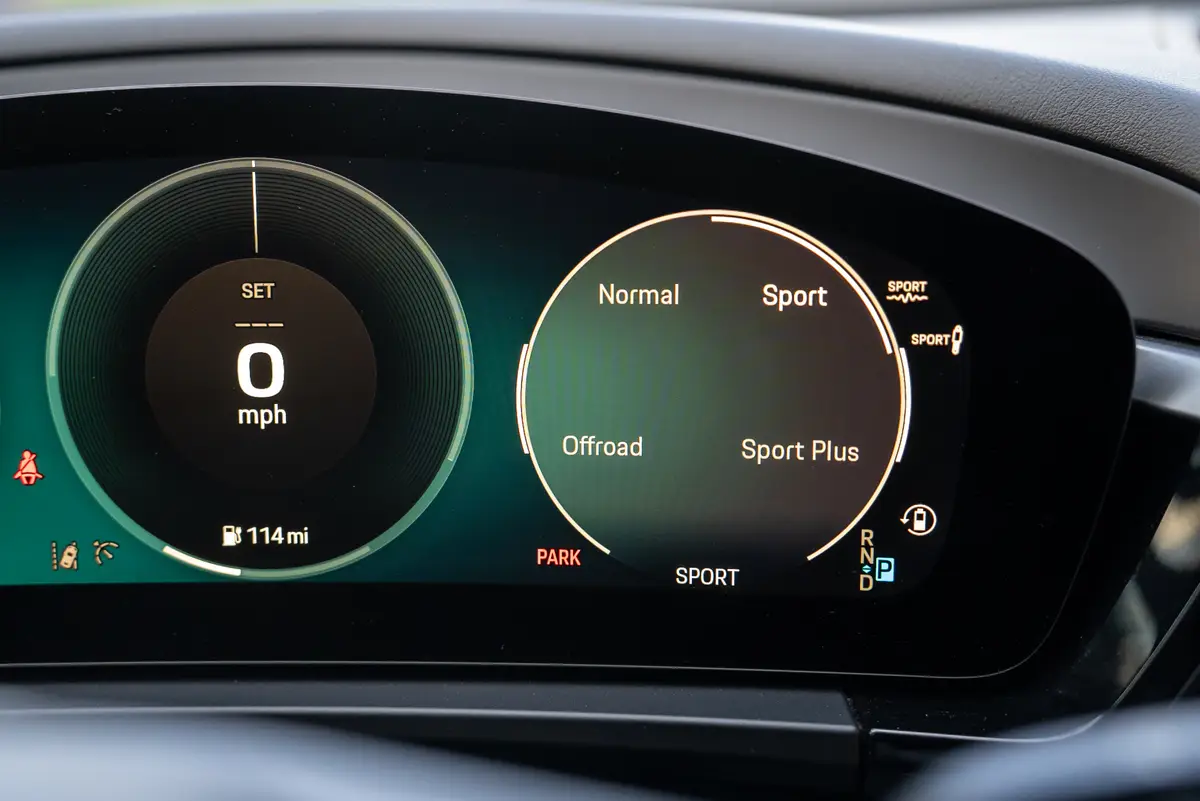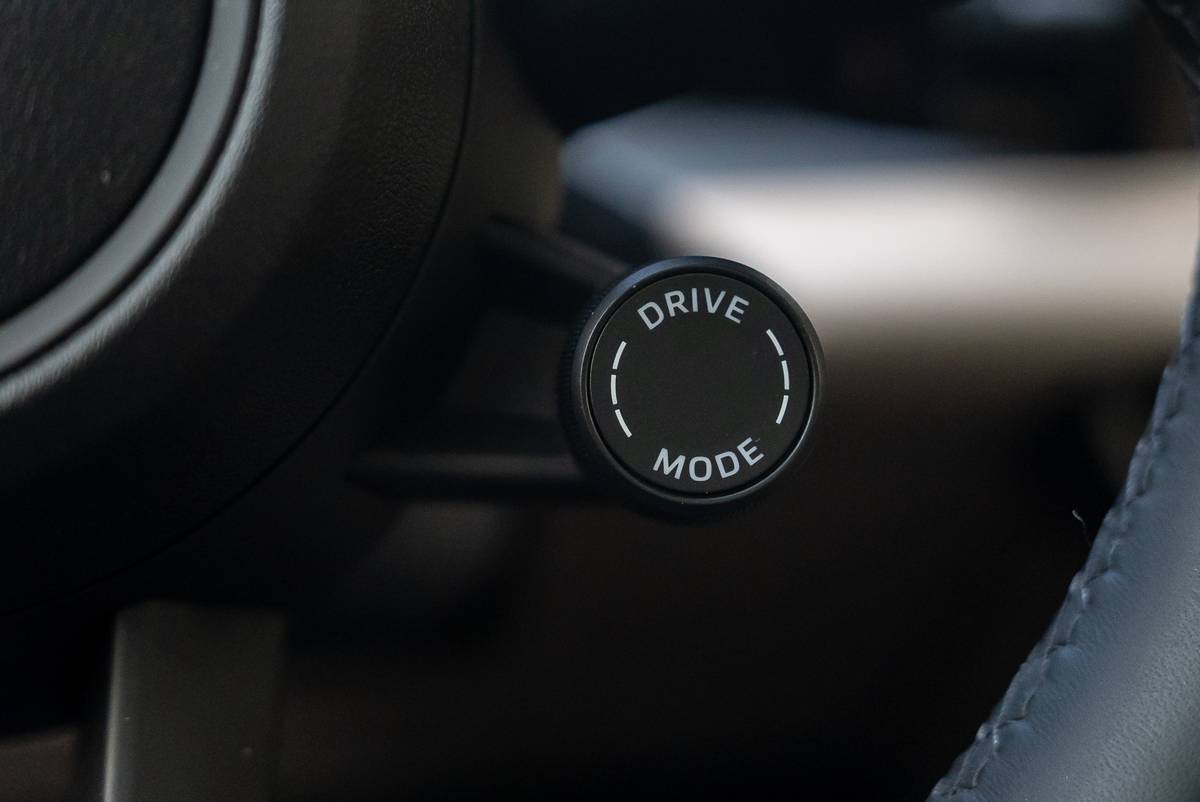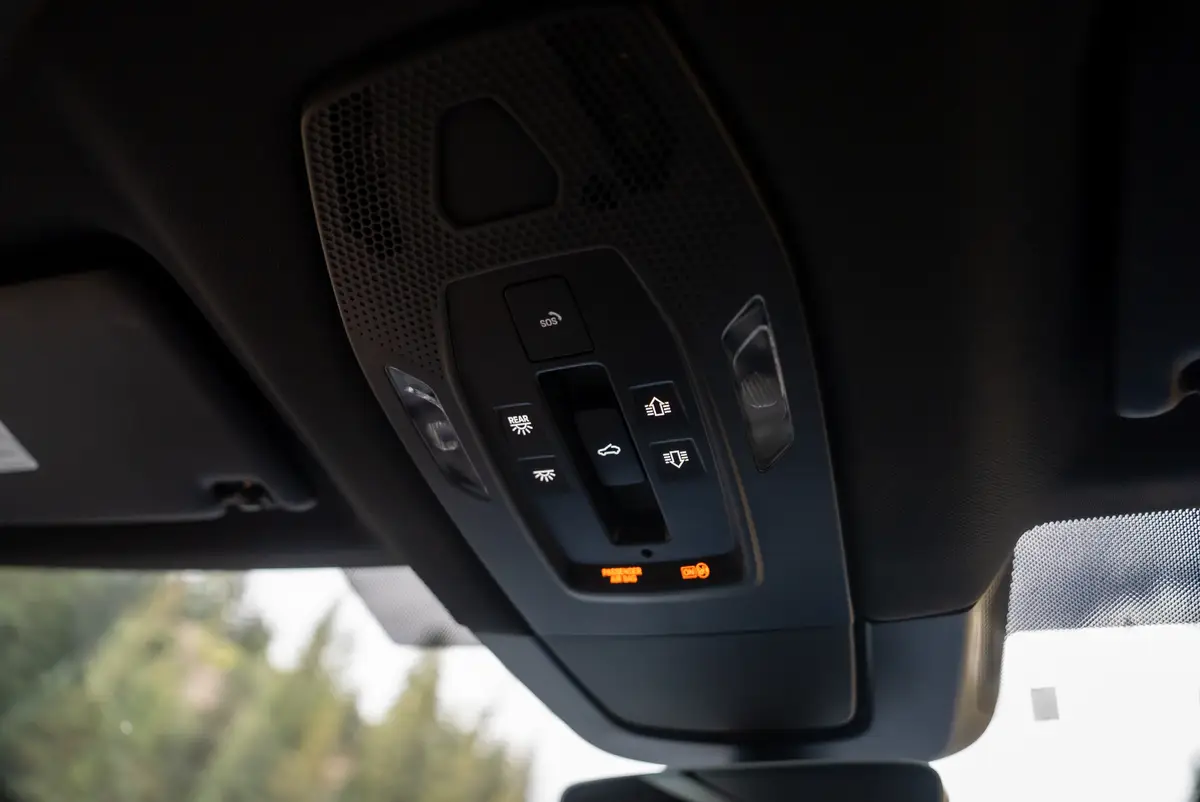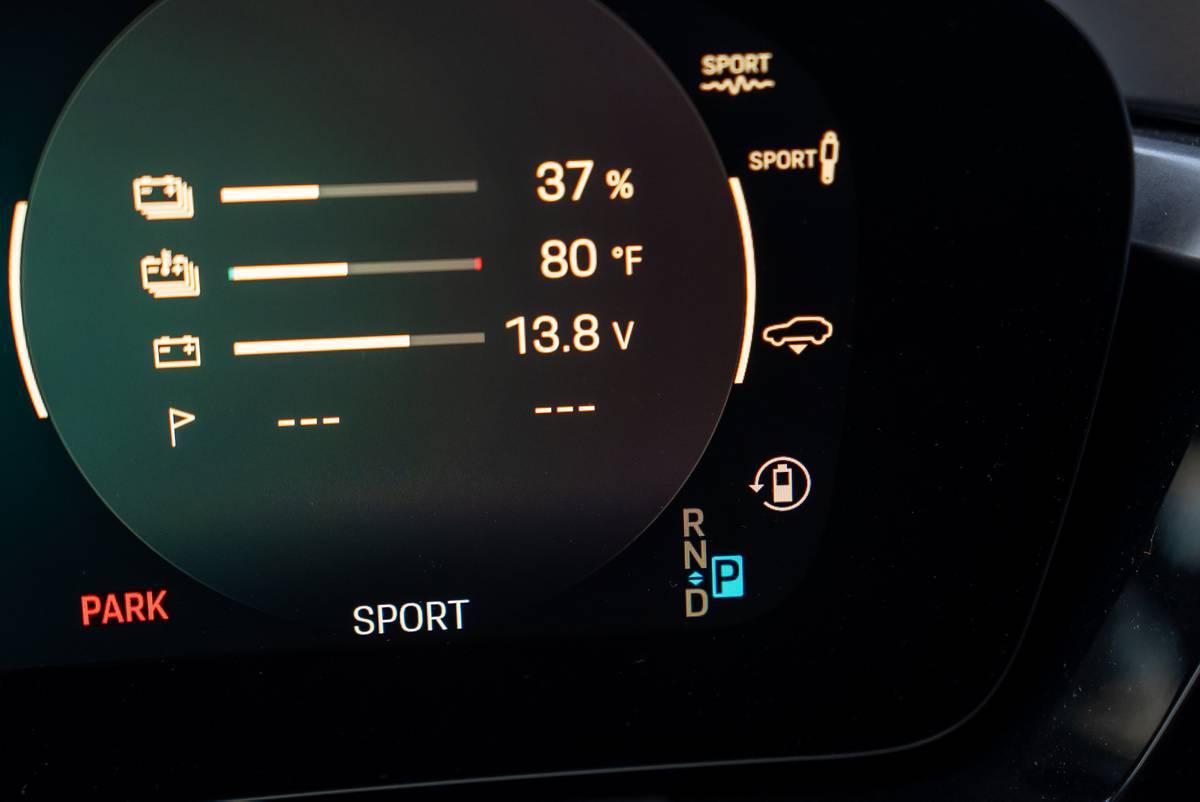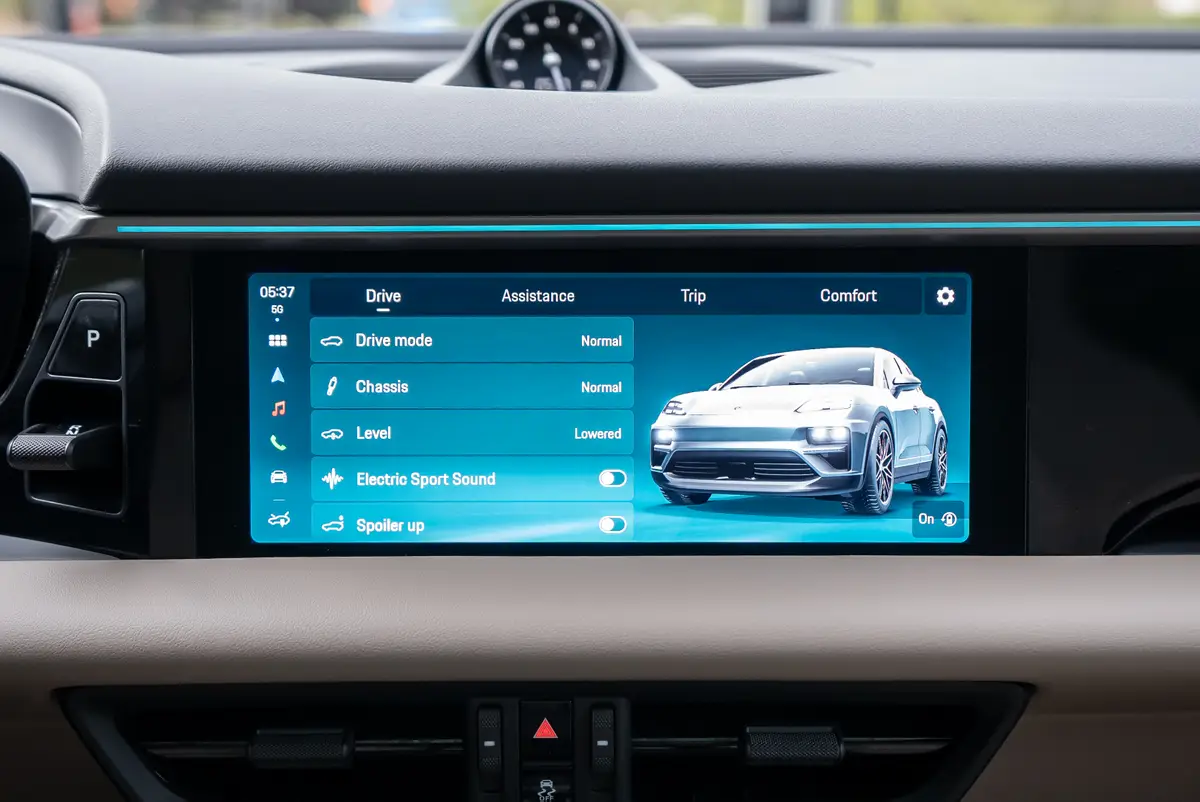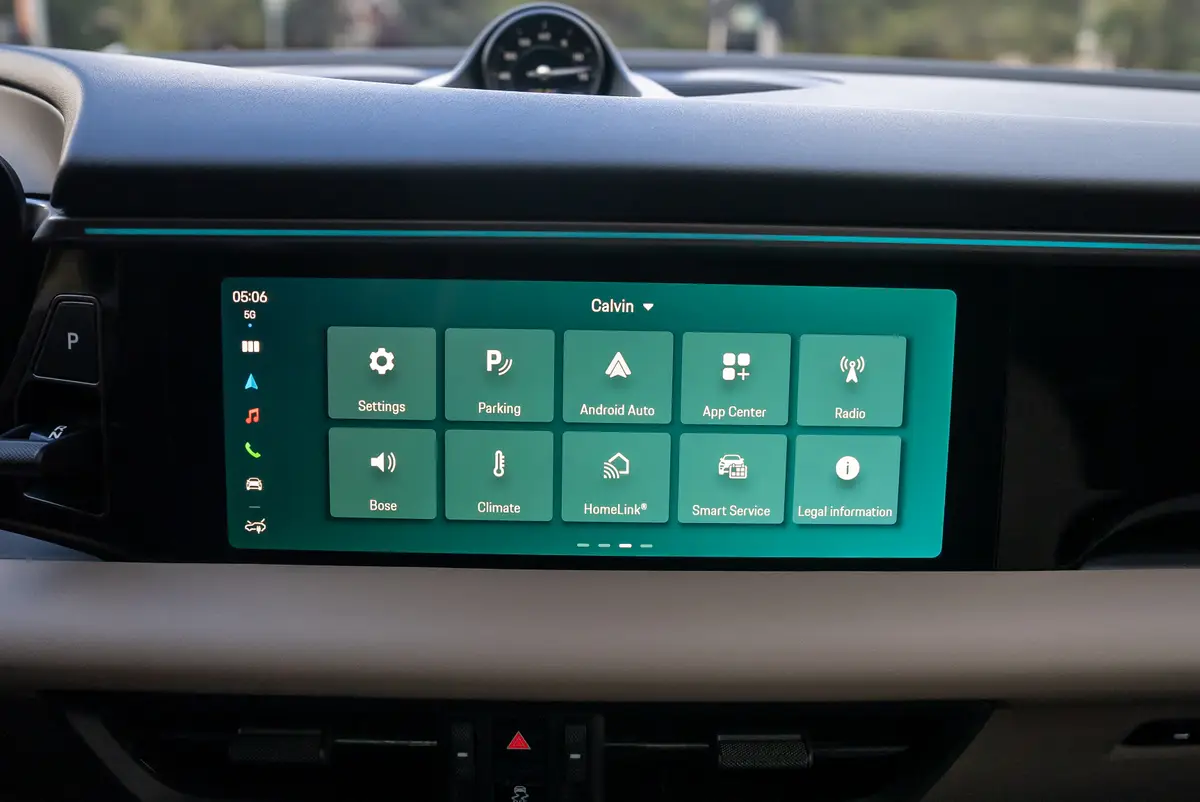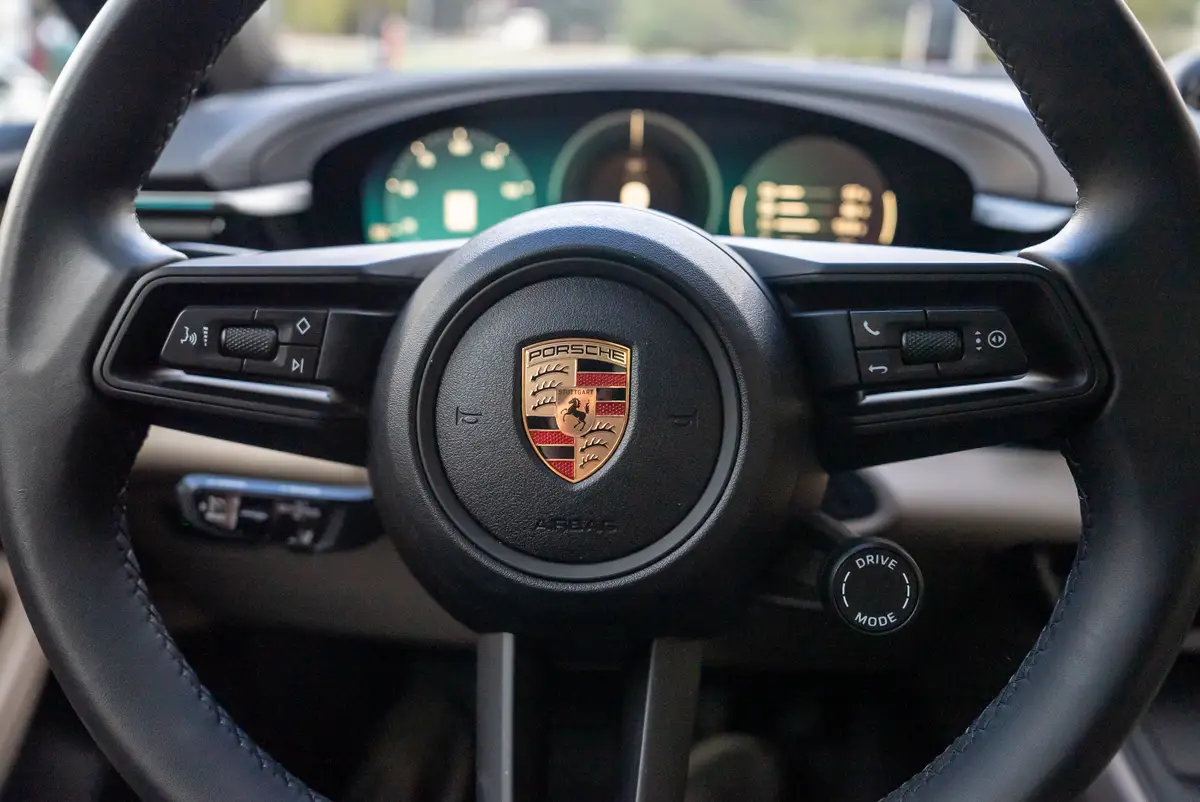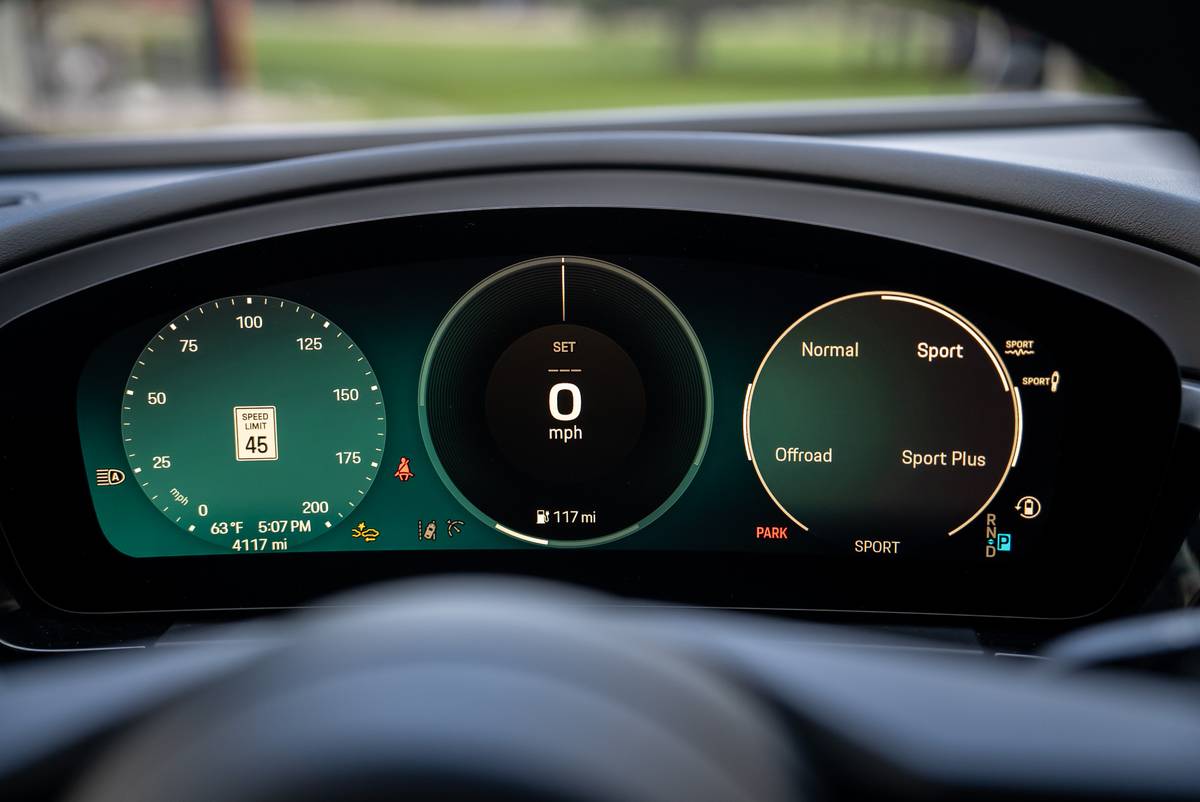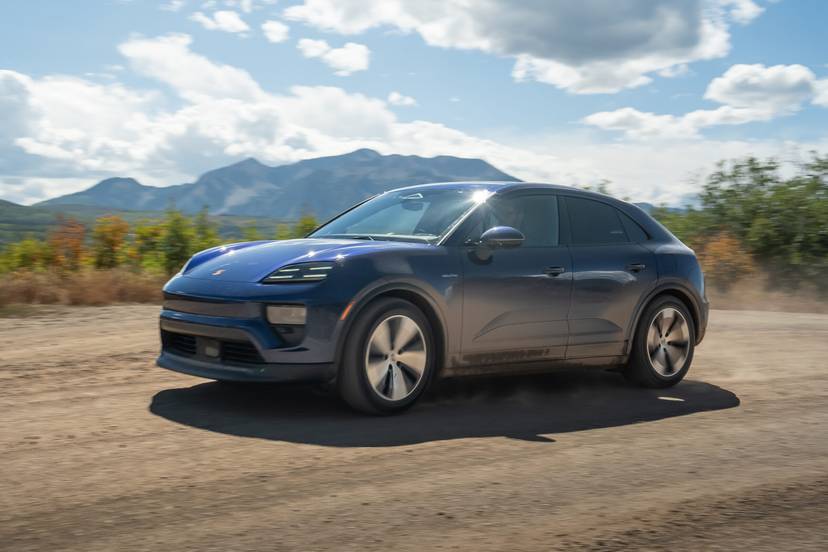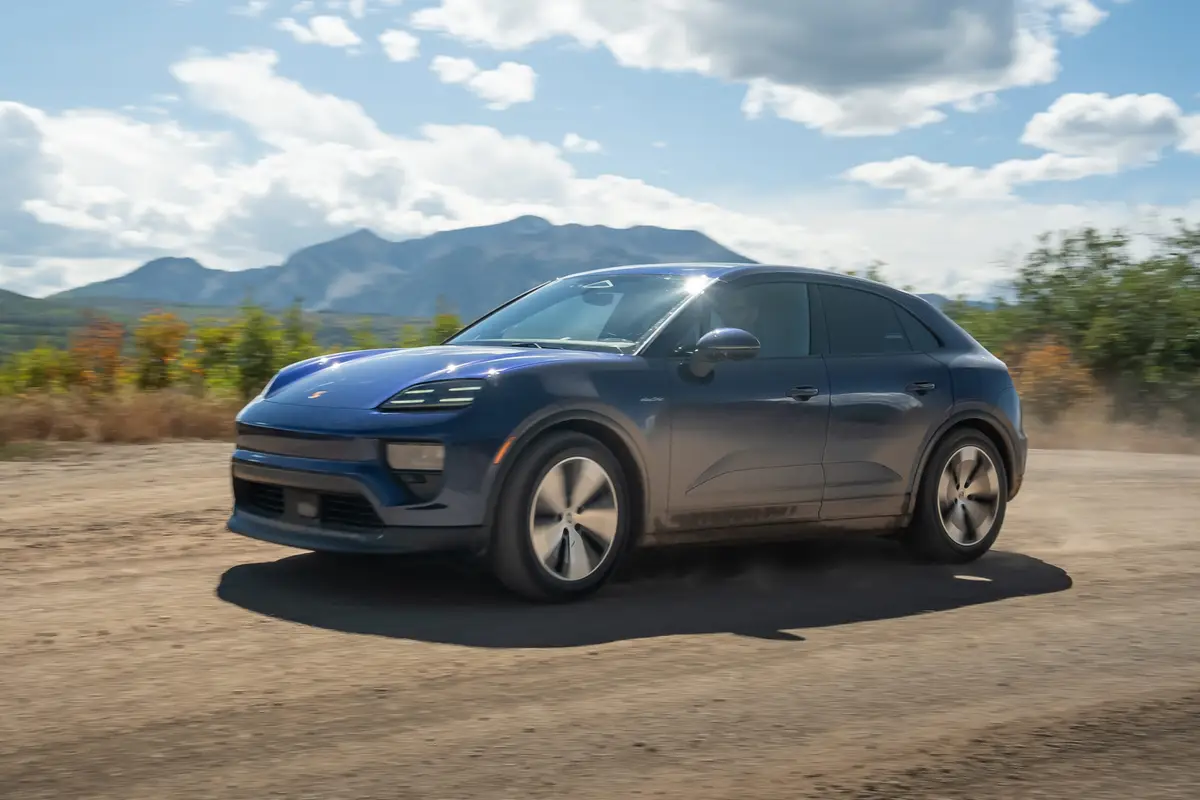
Key Points in This Review:
- The Porsche Macan Electric successfully transposes Porsche’s signature characteristics onto the platform of an electric compact SUV.
- The Macan Electric’s strong points include its athletic driving personality, a nicely finished cabin and a high level of configurability, but you’ll pay plenty for those virtues.
- The Macan Electric’s cramped backseat and small cargo area mean it isn’t the most practical electric SUV.
The Porsche Macan Electric compact SUV debuted for 2024 as the second all-electric vehicle in Porsche’s lineup, following in the footsteps of the new-for-2020 Taycan sports sedan. Beyond its name and overall shape, the Macan Electric shares little with its gas-powered Macan sibling; it’s built on a separate electric-only platform.
Related: 2026 Porsche Macan Electric: Upgraded Driver-Assist and Tech Features, $80,350 Base Price
Porsche is an enthusiast-oriented brand that built its reputation on nimble, impeccably assembled sports cars, like the beloved 911. As such, it’s judged by a slightly different standard than other luxury automakers: Namely, an engaging, high-performance driving experience is every bit as important to the traditional Porsche buyer as high-end trimmings. Porsche’s first SUV, the mid-size Cayenne, was initially controversial among enthusiasts who saw it as a dilution of the brand, though it largely won over consumers and became a sales success. The gas-engine Macan SUV was warmly received when it debuted in 2013, and the electric Taycan showed that Porsche could deliver its core characteristics in the form of an EV. So as an electric SUV, does the Porsche Macan Electric also succeed as a true Porsche?
To find out, I traveled to Aspen, Colo., at Porsche’s invitation to drive the 2025 Porsche Macan Electric. (Per our ethics policy, Cars.com pays for its own airfare and lodging when attending manufacturer-sponsored events.)
Related Video:
We cannot generate a video preview.
A Genuinely Athletic Feel, Even in Base RWD Trim
- Takeaway: The base rear-wheel-drive Macan Electric doesn’t have as much horsepower as many electric SUVs, but it still delivers a satisfyingly sporty driving experience.
The Porsche Macan Electric lineup consists of a base rear-wheel-drive version and three all-wheel-drive trims, called 4, 4S and Turbo. (The base and 4S are new for 2025.) Their respective horsepower ratings are 335, 382, 442 and 576 hp, and driver-selectable launch control temporarily boosts output when accelerating from a stop.
I drove only an entry-level RWD trim, which seems on paper to be at a disadvantage compared with many electric SUVs. Its 335-hp rating isn’t a lot compared with the outputs of many AWD rivals, and even with the launch control feature temporarily boosting output to 355 hp, its acceleration isn’t particularly thrilling from a stop. Like other performance-focused EVs we’ve tested, this Porsche’s power curve can plateau noticeably at speeds above 60 mph. Even so, the base Macan Electric’s acceleration is strong enough to be entertaining overall: Porsche quotes a 5.4-second 0-60 mph time with launch control, which feels accurate by the seat of my pants.
The Macan Electric’s curb weight ranges from 5,004 pounds for the RWD version to 5,393 pounds for the line-topping Turbo. It’s no featherweight (even among other compact electric SUVs), but it hides its heft well; it feels balanced and poised in fast, aggressive cornering. Its nicely tuned steering is a big plus here; it’s communicative and direct without feeling jittery or requiring lots of minute corrections.
Respectable Ride Quality, Natural-Feeling Brakes
- Takeaway: The Macan Electric’s decent ride quality and natural-feeling brakes are pluses, but, unlike many EVs, Porsche doesn’t provide a one-pedal driving mode.
Considering the Macan Electric’s agility, its ride quality is sufficiently absorbent, at least on the standard 20-inch wheels and tires my test vehicle wore; 21- and 22-inch wheels are optional. An adaptive air suspension that alters both ride height and firmness via driver-selectable drive modes is standard. In the Macan Electric’s Normal drive mode, the ride is taut but never harsh, even on the rutted gravel roads that comprised a decent portion of our drive route. Sport and Sport Plus modes make the ride stiffer while delivering sharper handling.
Brake-pedal feel is impressively natural and linear, which isn’t always the case in EVs. Along with its expertly tuned steering, this contributes to the Macan Electric’s engaging driving character. A selectable brake-regen mode provides a noticeable amount of regenerative braking, which I especially appreciated during the sharper descents on our mountain-road route. Unlike many EVs, however, the Macan Electric doesn’t include a one-pedal driving mode; Porsche engineers believe one-pedal driving is less natural and ultimately less efficient than letting the vehicle coast when the driver lifts off the accelerator. Fair enough, but if you happen to like the feature, know you can’t get it in a Porsche EV.
Interior Is Impeccably Trimmed, But Not Particularly Spacious
- Takeaway: The Macan Electric prioritizes sporty styling over generous backseat space and cargo volume, but its cabin boasts high-quality materials and fit and finish.
The Macan Electric’s wheelbase is 3.4 inches longer than the gas-engine Macan’s, and it’s 2.24 inches longer overall, but interior room is still pretty stingy for an SUV. Its rear cargo area is smaller than most rivals’, and though there is a front trunk under its hood, it can’t accommodate much more than the charging cable’s carrying case.
The backseat is similarly cramped, especially for extra-tall occupants like me. Headroom is tight under the standard panoramic moonroof, and legroom shrinks quickly as the front seats are adjusted rearward. With the front seats adjusted to fit my 6-foot-6-inch frame, I couldn’t fit in the backseat. Even with it set for our 5-foot-11 videographer, my knees were still rubbing the back of the front seat.
Front-seat space and comfort, however, is quite good. I had headroom to spare, and my test car’s 14-way power-adjustable front seats with memory (a $1,390 option) had just the right mix of comfort and support. The Macan Electric’s agreeable control layout is highlighted by a standard 12.6-inch digital gauge cluster and 10.9-inch infotainment touchscreen, both of which have clear, easy-to-read graphics. It took me a bit to acclimate to the dashboard-mounted paddle gear selector, and the SUV’s single climate-control touch panel feels a bit chintzy at the Macan Electric’s prices, but overall the controls are logically laid out and easy to use.
The Macan Electric’s cabin ambiance, on the other hand, is definitely NOT chintzy. The materials aren’t cushy or lavish, but they’re high-quality and assembled with precision — another Porsche trait that carries over uncompromised here.
Competitive Driving Range and Charging Specs
- Takeaway: The Macan Electric’s EPA-estimated driving range and Porsche’s quoted charging times put it on par with rival EVs.
We didn’t have the chance to do any charging or range testing during our one-day test drive, but the Macan Electric’s specs are competitive, especially when you factor in its performance. Its EPA-estimated driving range is 288 miles in the 4S and Turbo trims, 308 miles in the 4 and 315 miles in the base trim, which is on par with competitors.
All Macan Electric SUVs have 800-volt charging architecture, dual charging ports (the driver’s side accepts both AC and DC connectors, while the passenger side is AC-only) and a 100-kilowatt-hour battery with 95 kWh of usable capacity. Regardless of trim, the Macan Electric can be charged from 10% to 80% in 21 minutes when DC fast-charging at 270 kilowatts, according to Porsche. Earlier this month, Porsche EV owners gained access to Tesla’s Supercharger network, and while the Macan Electric doesn’t have a Tesla-style North American Charging Standard charging port, owners can get a complimentary adapter from Porsche.
Steep Pricing Gets Steeper With Options
- Takeaway: Porsche isn’t known for bargain pricing, and the Macan Electric doesn’t change that.
The 2025 Porsche Macan Electric starts at $79,995 in base RWD trim and runs to $111,095 for the line-topping Turbo (prices include a $1,995 destination fee). Though that includes a passable amount of standard equipment, there’s a lot that isn’t standard — and choosing from Porsche’s smorgasbord of options can easily tack on $10,000 or more to the bottom line.
My test vehicle was finished in Gentian Blue Metallic paint ($1,290) and included add-ons like rear-axle steering ($2,110), a Sport Chrono Package ($1,020), ventilated front seats ($670), four-zone climate control ($490) and a rear wiper ($380 — but how is this not standard??). Heck, even Porsche’s Electric Sport Sound artificial powertrain sound tacked on $510. All these and more helped push our as-tested price to roughly $90,000 — and remember, this is still the base trim level. It’s not hard at all to get a Macan Electric Turbo into the $130,000 range.
Updates Coming for 2026
- Takeaway: The Macan Electric is scheduled to receive a number of tech updates for 2026, but none of them will affect its driving dynamics.
As of this writing, the 2026 Porsche Macan Electric is already on the horizon. It’s scheduled to go on sale in the spring of 2026 with slightly higher prices, a higher maximum tow rating (up to 5,500 pounds from 4,400) and a number of tech updates (which you can read about in detail here). No changes that affect how it drives are planned — which is a good thing given its driving experience is the Macan Electric’s most compelling asset. It’s a fine EV that also looks, feels and drives like a true Porsche.
More Porsche News From Cars.com:
- Porsche Charging Service Adds Locations, In-App Payments for ChargePoint Stations
- 2025 Porsche Macan Line Expands With RWD Base Model, 4S
- Is the 2024 Porsche Macan T a Good SUV? 5 Pros, 3 Cons
- Porsche Cayenne to Soon Get EV Powertrain
- Porsche Joins Black Parade With 2026 Taycan Black Edition





























